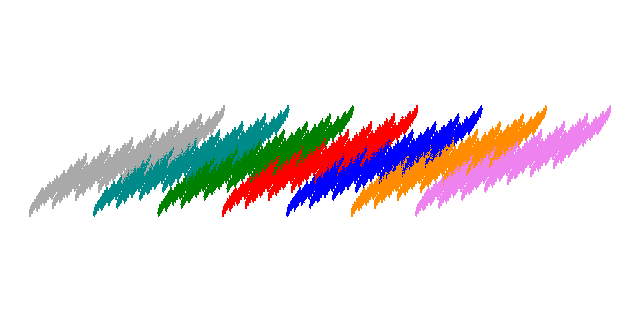
A “caterpillar” rep-n-tile is generated by an IFS of the form.
{ p → -ap; { p → ap + x, x ∈ [1...n-1] } }
Apart form the possibility of the attractor being disconnected this seems to generate a tile for all quadratic Perron numbers 1/a.
For hextals this can be generalised to
{ p → -aeimπ/3p; { p → aeimπ/3p + x, x ∈ [1...n-1] } }
in the same way as the linear reptiles
{ { p → ap + x, x ∈ [0...n-1] } }
are generalised to
{ { p → aeimπ/3p + x, x ∈ [0...n-1] } }
This can be further generalised to
{ p → -aei(j+m)π/3p; { p → aeimπ/3p + x, x ∈ [1...n-1] } }
which can be rewritten as
{ p → aei(k+m)π/3p; { p → aeimπ/3p + x, x ∈ [1...n-1] } }, k = j + 3 % 6
A third generalisation is change the element which is located at the origin, but continue to orient this one independently of the others. This also generates tiles. (I need to investigate whether this holds for other values of a.)
This gives a total of 144 candidate cis-tiles - 6 orientations of 6 elements × 6 orientations of the 7th element × 4 positions of the origin. When k = 0 the attractor is isorotational, which means that the placement relative the origin doesn't matter reducing 24 candidates to 6. This is further reduced to 3 tiles - the (isorotational) linear heptahextals - because the attractors are c2-symmetric, and hence rotation of elements by π doesn't change the attractor. This leaves 120 candidates to be considered. Symmetry again comes into play when the 4th element is placed at the origin. The attractors are c2-symmetric, reducing the 30 non-isorotational attractors to 6. This means that there are 96 attractors in total to investigate, or 99 if the isorotational ones are included. In total 9 attractors are disconnected leaving 90 distinct cis-tiles.
I haven't looked into tiling these, other than for the 3 linear heptahextals, but general principles predict that for k = 0 there is one copy in the unit cell, for k = 3 there are two copies, and for other values of k 3 or 6 copies. This is causally related to the generally cryptic nature of tiles with such values of k.
The corresponding trans-tile for the linear heptahextals are the rep-7 (√7:1) parallelograms, which have a single degree of freedom, covering everything from a rectangle to arbitrarily close to a straight line. The corresponding trans-tile for the “caterpillar” tiles is the “concertina” tile, which has a similar degree of freedom. If the same holds for the other rotations and layouts this gives 18 candidate distinct trans-tiles.
These are (with their IFSs)
{ p → ap - 3; p → ap - 2; p → ap - 1; p → ap; p → ap + 1; p → ap + 2;p → ap + 3}

{ p → eiπ/6ap - 3; p → eiπ/6ap - 2; p → eiπ/6ap - 1; p → eiπ/6ap; p → eiπ/6ap + 1; p → eiπ/6ap + 2;p → eiπ/6ap + 3}
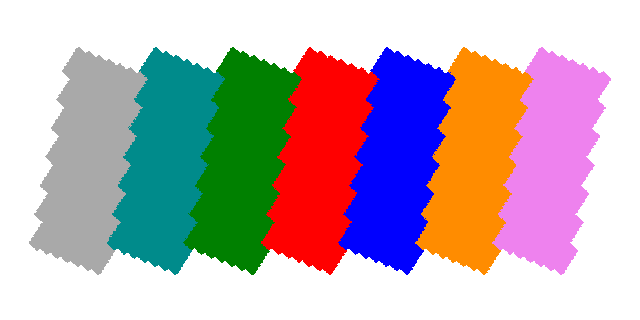
{ p → eiπ/3ap - 3; p → eiπ/3ap - 2; p → eiπ/3ap - 1; p → eiπ/3ap; p → eiπ/3ap + 1; p → eiπ/3ap + 2;p → eiπ/3ap + 3}
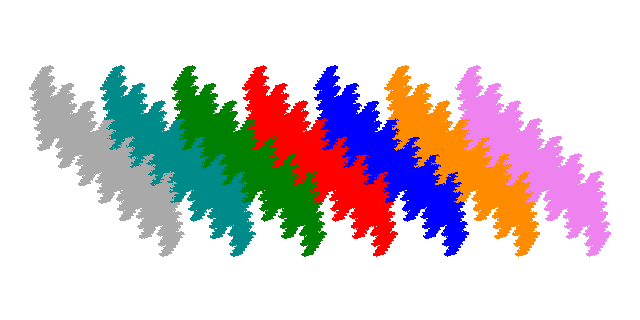
With the above IFSs, they tile the plane with one copy in the unit cell. The tiling vectors are e70 (7) and e11 (1/2 + √3/2), though there are multiple alternative tilings.
Whilst the cis isorotational linear heptahextals are Perron tiles, their trans- equivalents are non-Perron tiles, rather than pseudo-Perron tiles. They are rep-7 parallelograms, which are a set of attractors in which the sides have a fixed ratio of √7:1, but the angle between the tiles can take any value α other than an integer multiple of π, i.e. the IFS is
{ { p → √7eiαp + n; n ∈ [0...6] } }
The caterpillar construction generates 6 attractors, but 2 are not connected. (The patterning of the bluer areas on the plot of the measure function is a pixelisation artefact resulting from using an algorithm capable of deep zoom, which was necessary to confirm that other tiles were indeed tiles. Using the standard random alogorithm replaces this by speckling which represents randomisation noise. Getting ride of pixelisation and randomisation noise requires plotting more points so variability in the number of points for each pixel becomes negligible.)
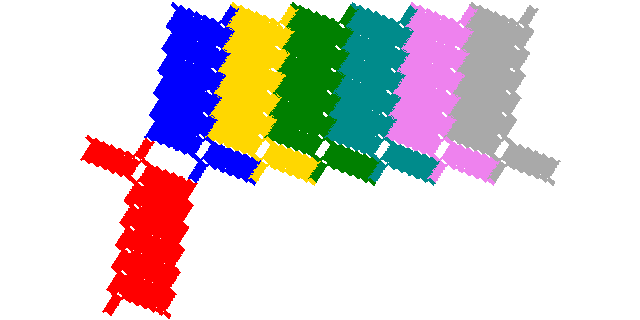
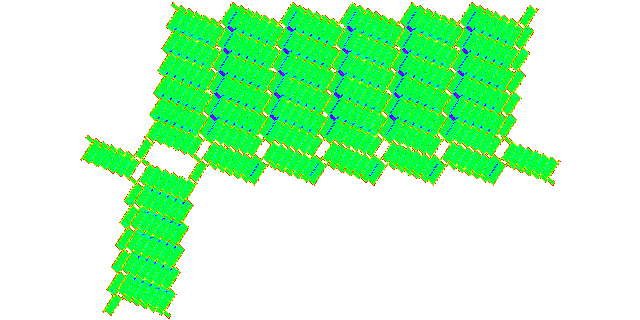
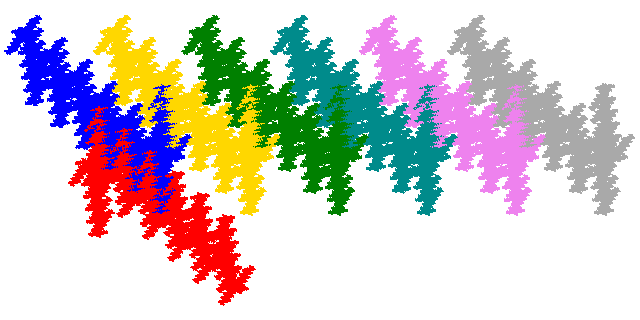
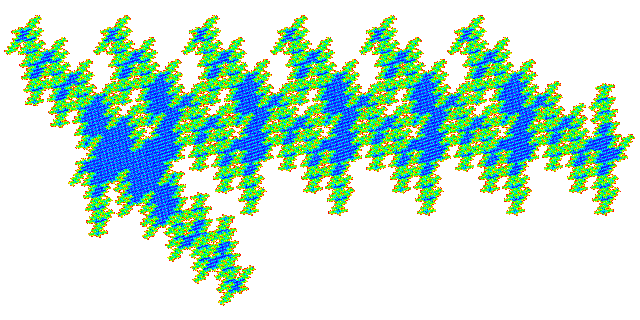
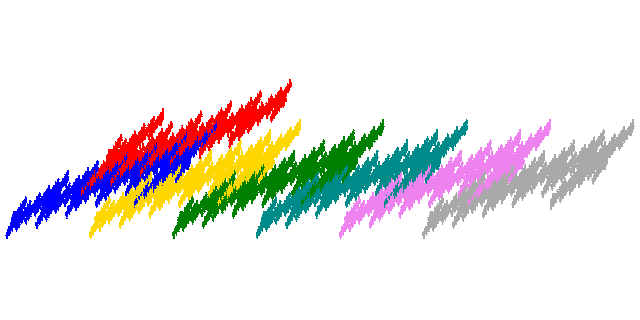
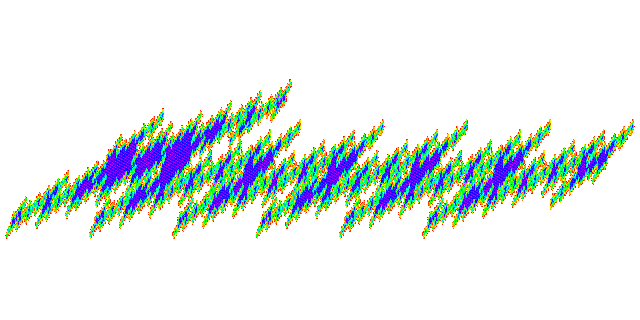
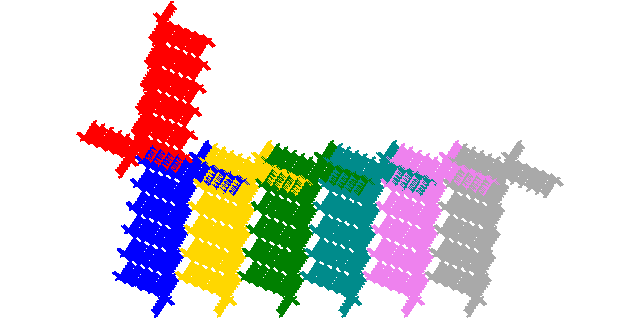
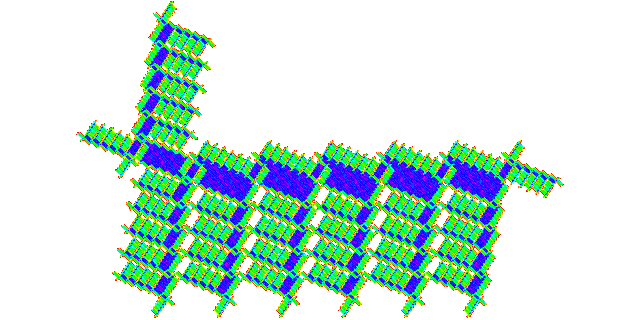
I haven't confirmed this, but I expect that the tiling vectors are again e70 and e11, and that the unit cell is { p → p; p → -p }, though the unit cell might be modified to be more compact.
After the linear and caterpillar tiles have been removed, there are 24 candidate tiles. 3 are disconnected, leaving 21 tiles.
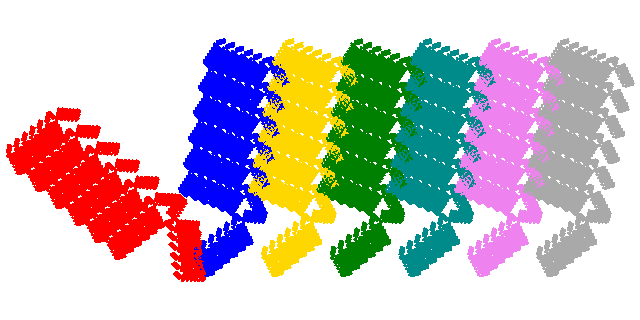
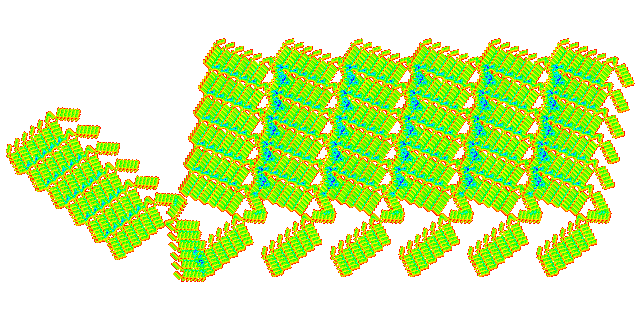
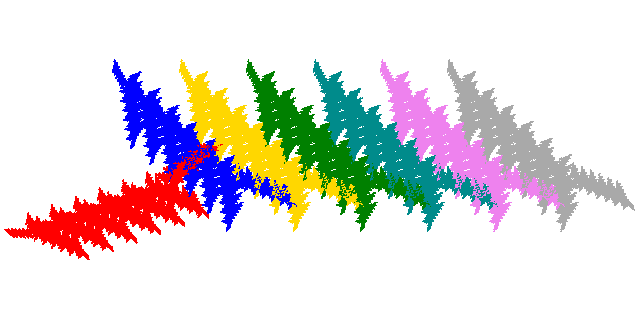
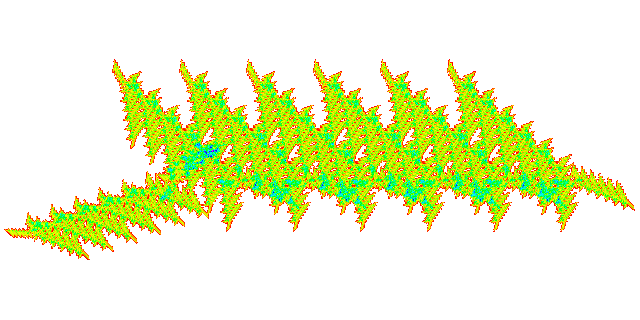
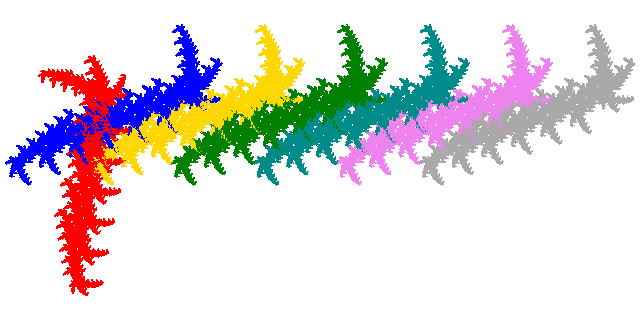
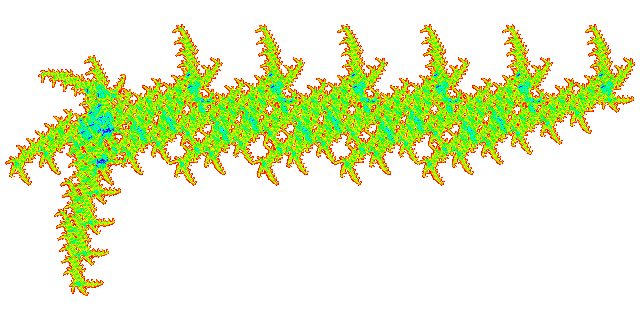
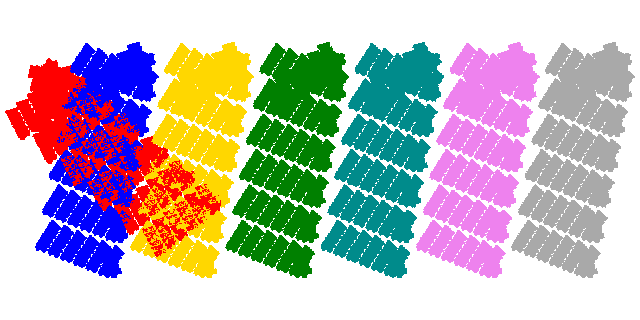
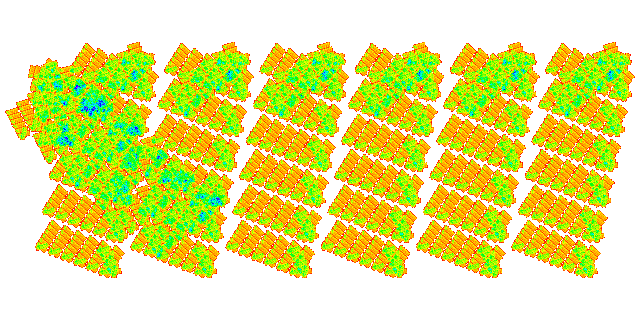
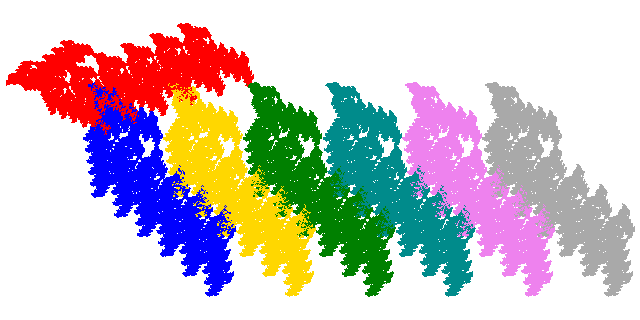
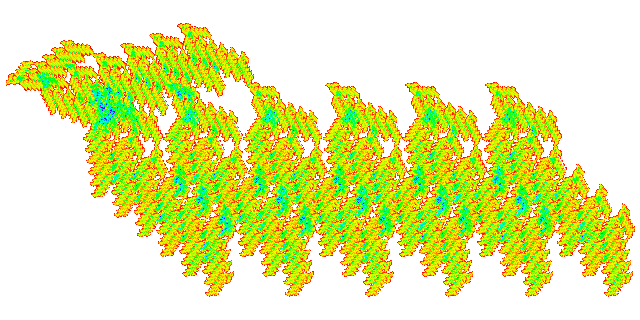
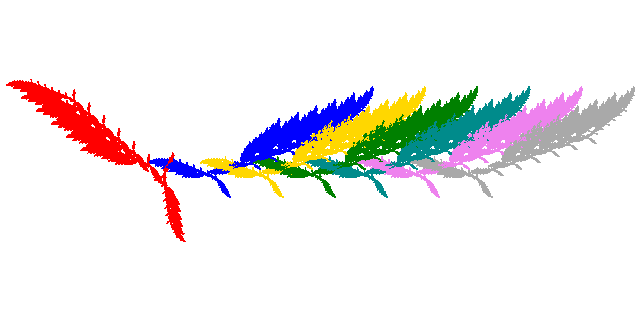
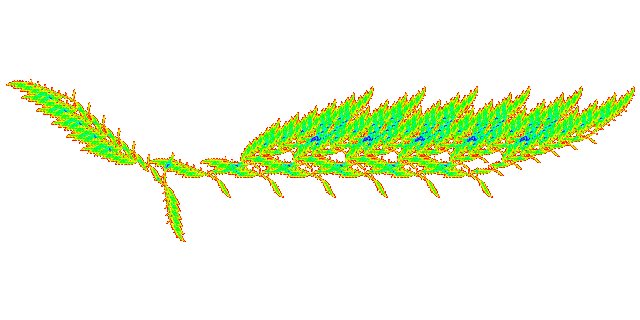
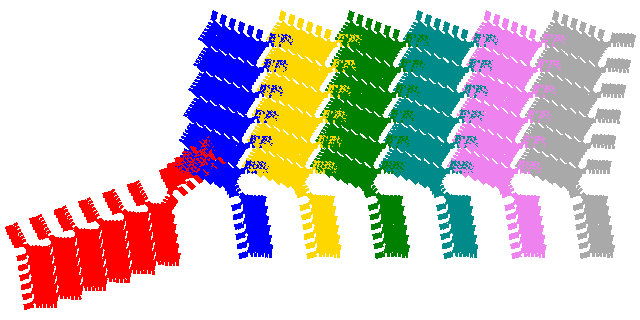
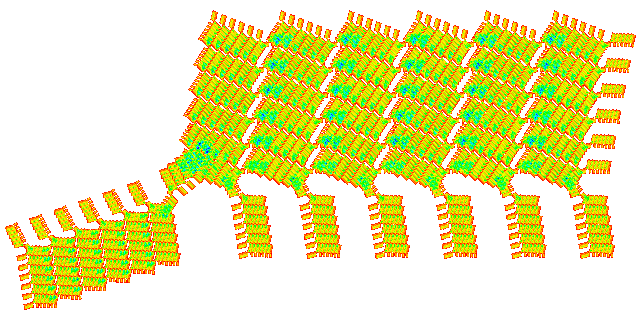
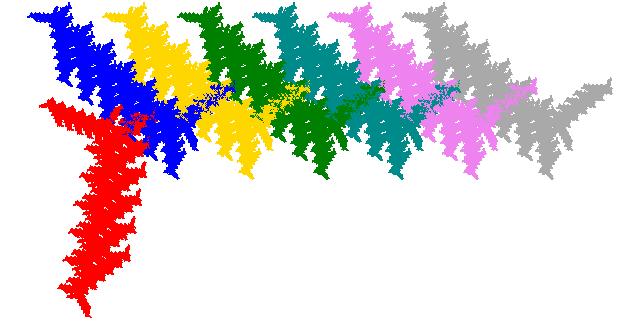
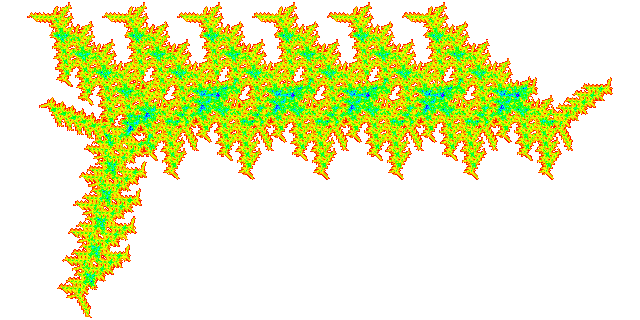
While most of these tiles are cryptic and require a deep zoom (or plotting of a unit cell or tiling patch) to demonstrate that they are tiles the following one is identifiable visually, and confirmable with a shallow (say 20-fold) zoom.
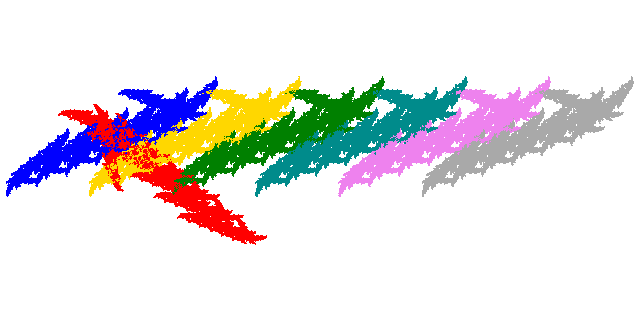
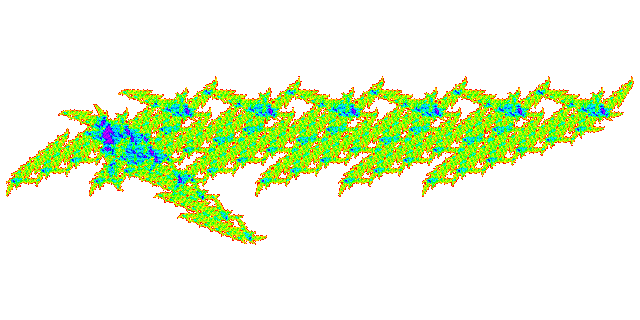
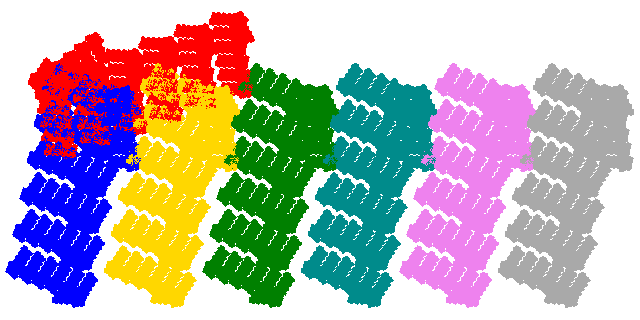
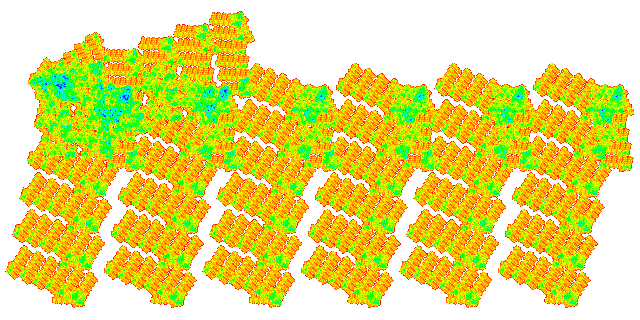
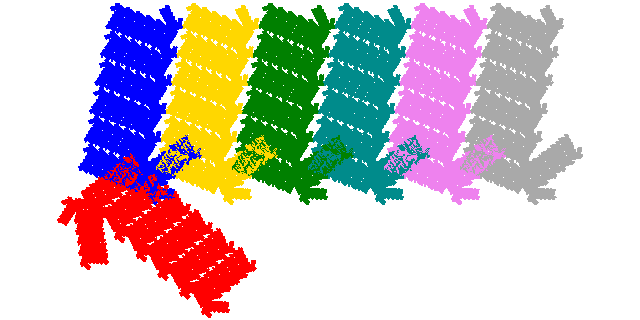
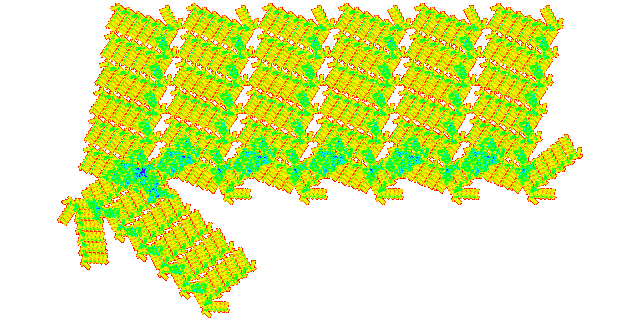
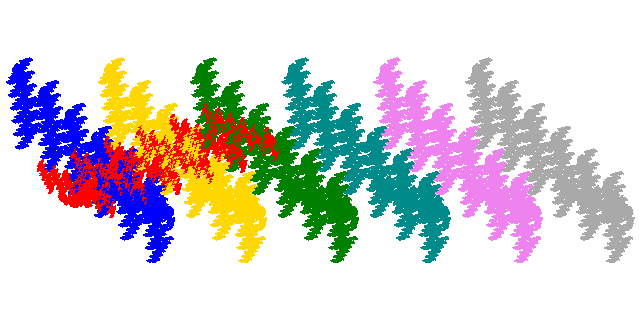
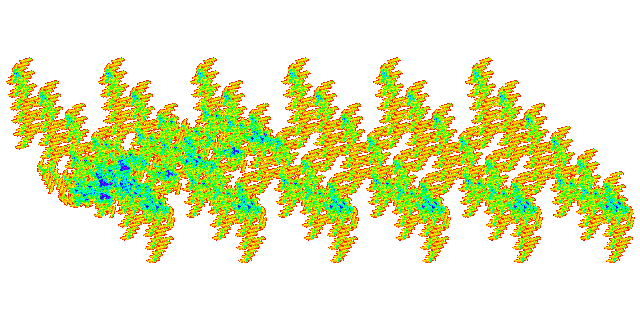
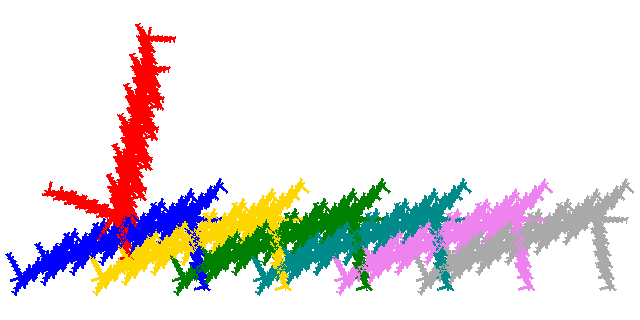
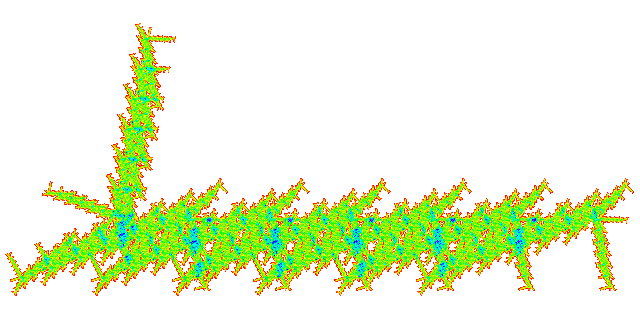
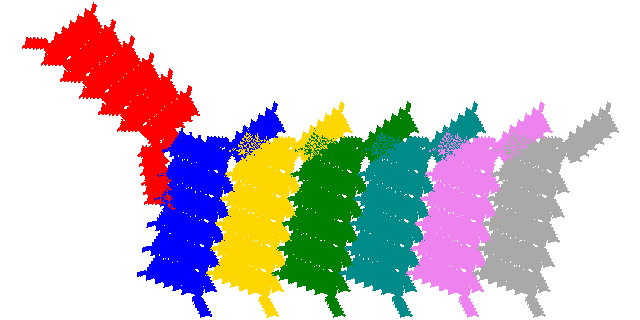
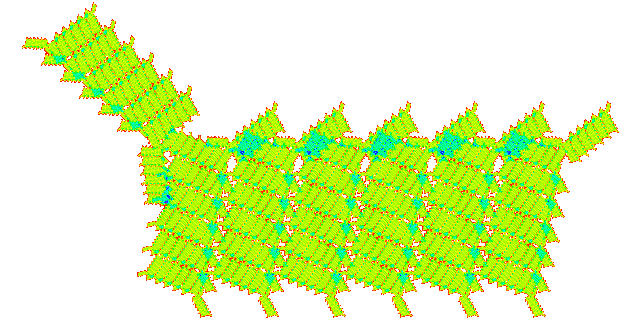
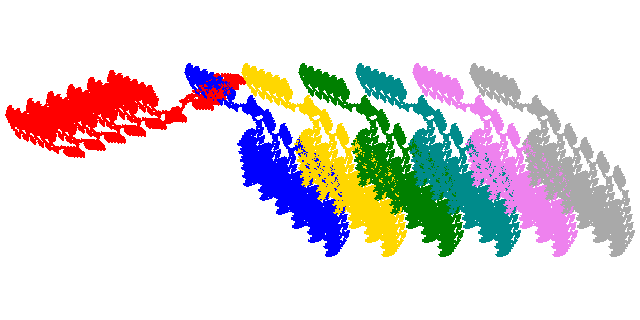
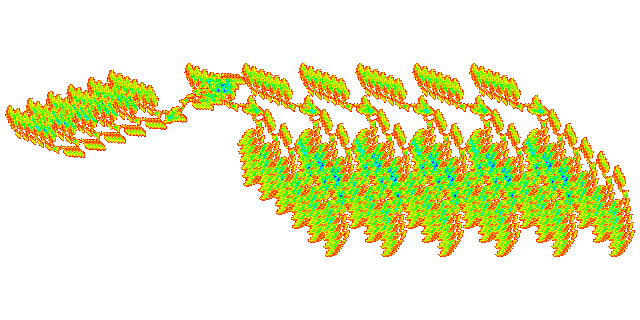
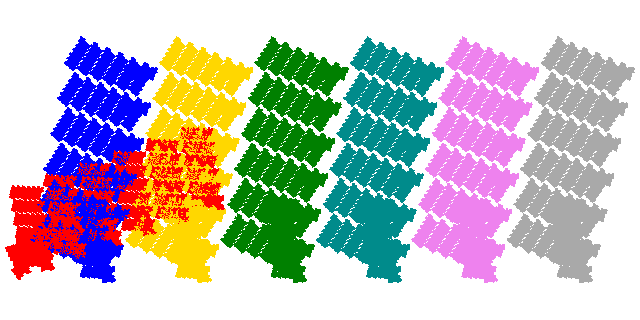
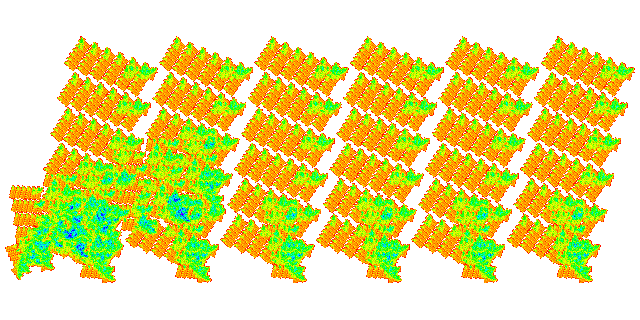
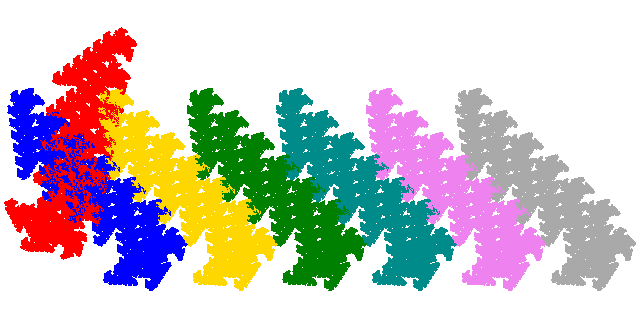
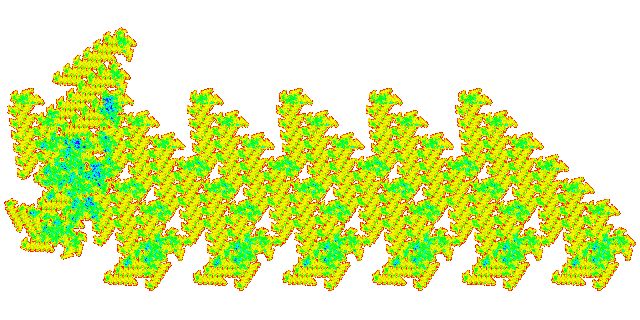
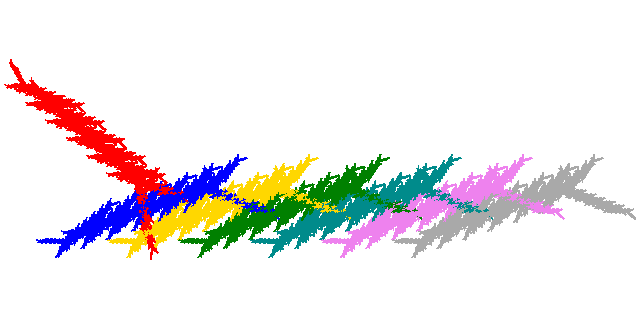
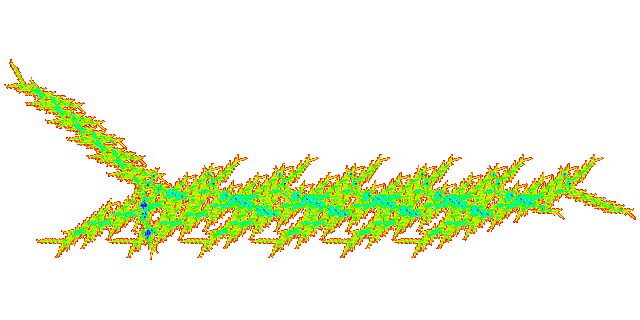
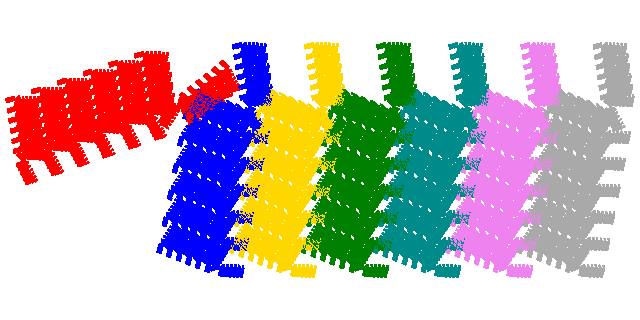
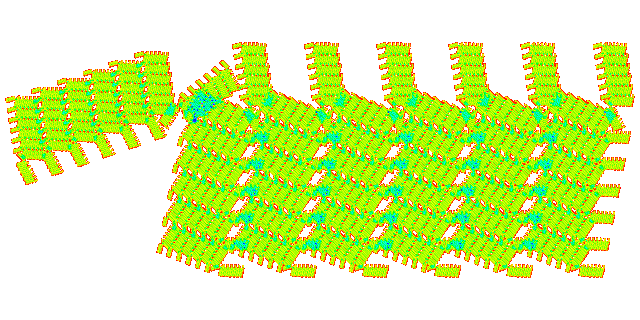
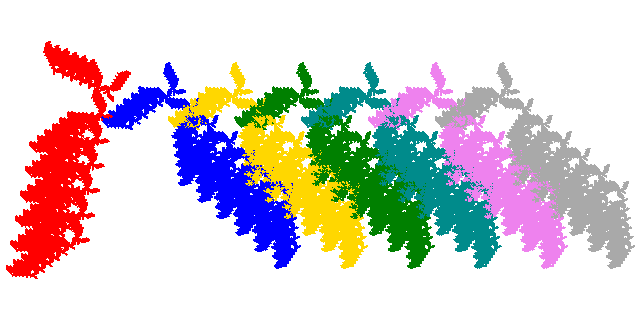
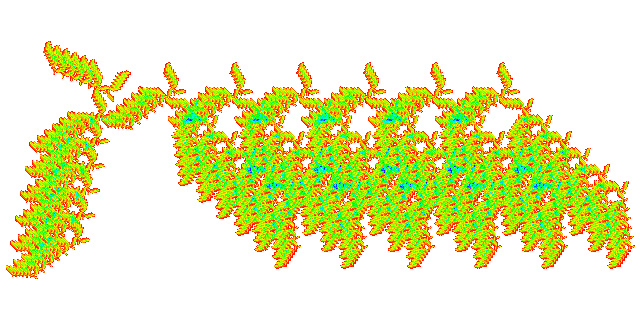
As the equivalent of the caterpillar tiles haven't been separated off here, there are 30 non-isorotational candidates. 4 are disconnected, giving 26 tiles.
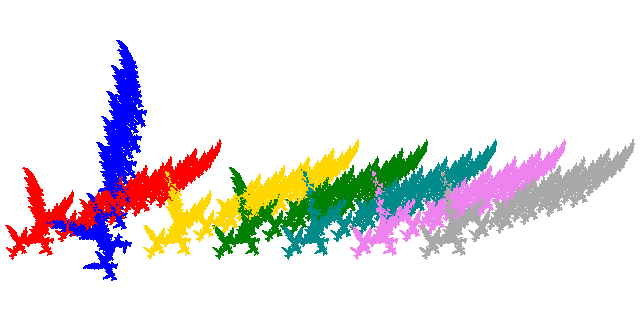
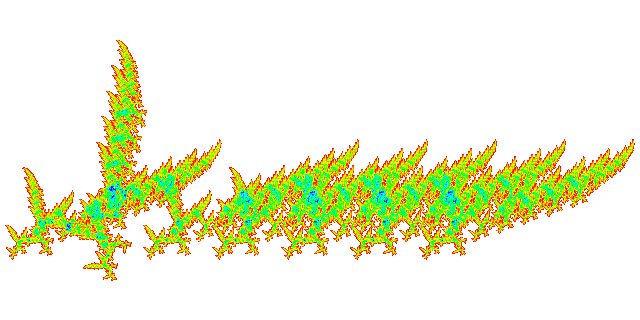
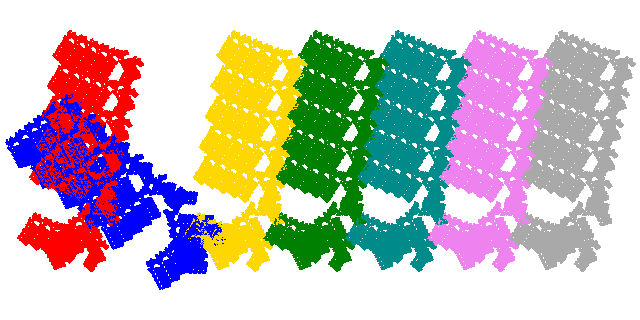
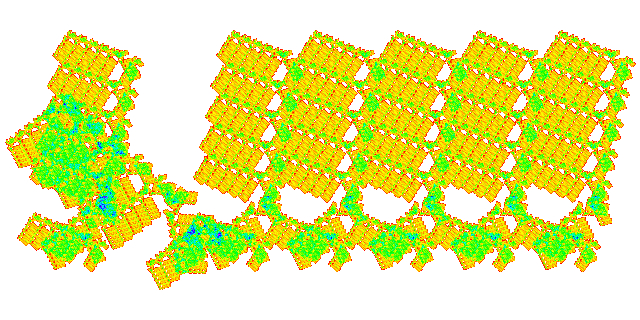
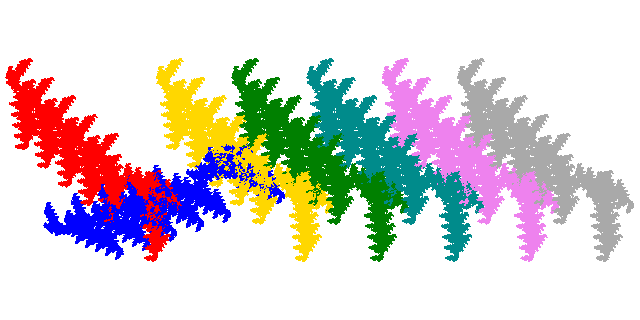
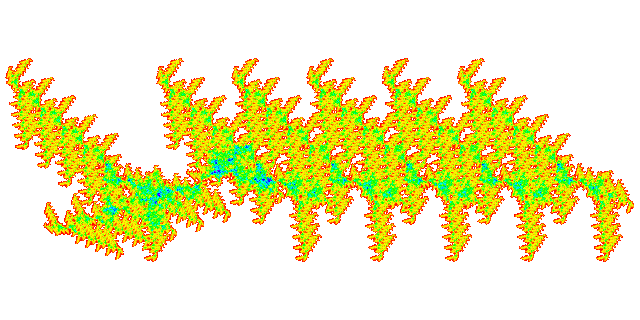
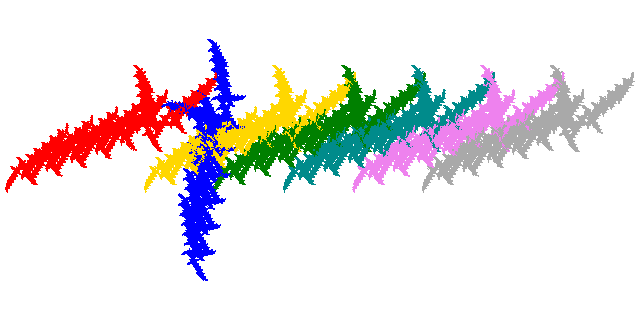
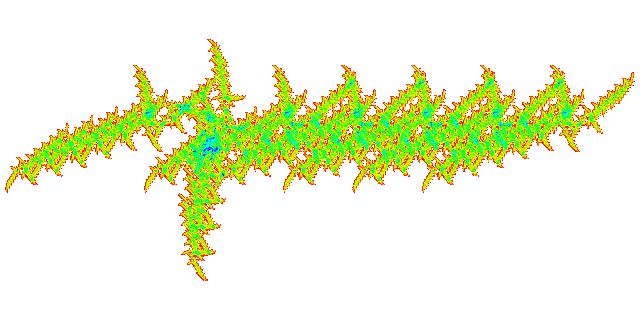
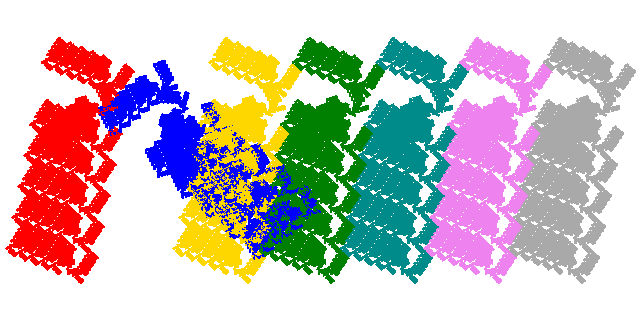
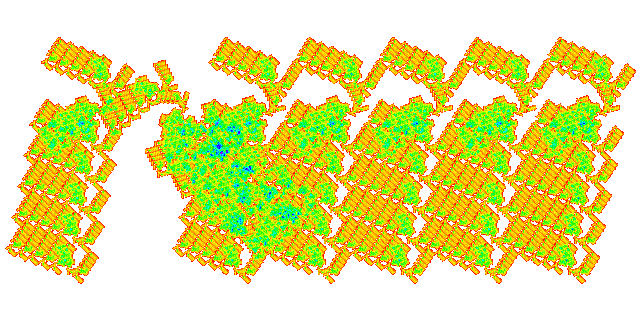
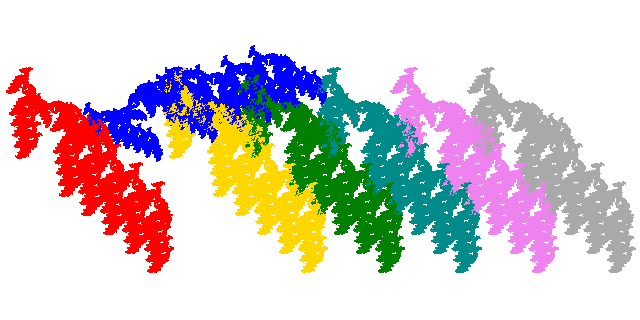
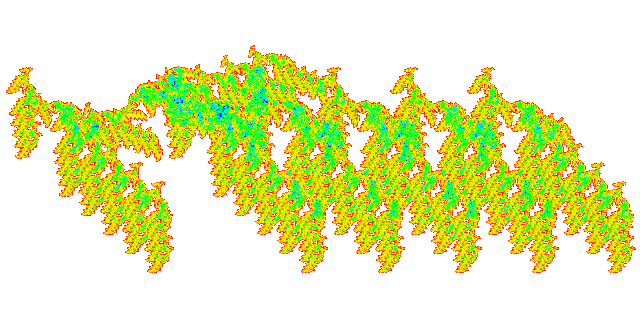
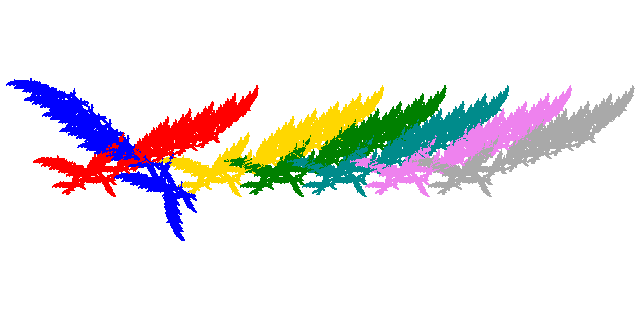
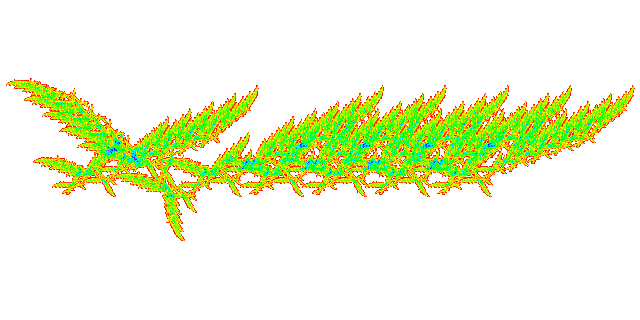
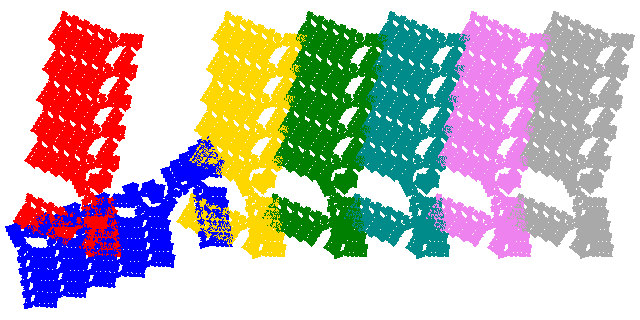
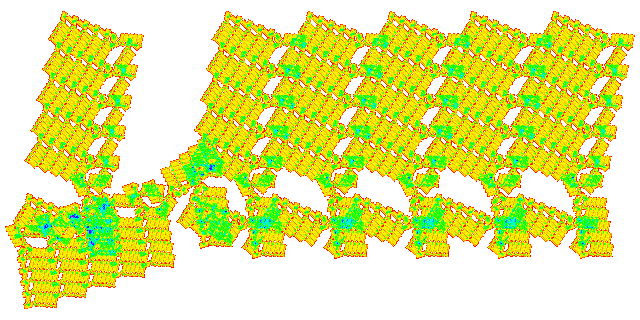
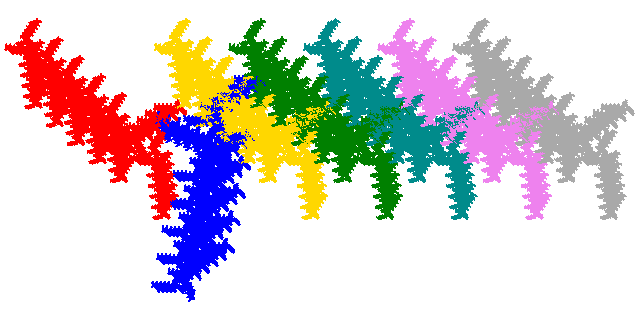
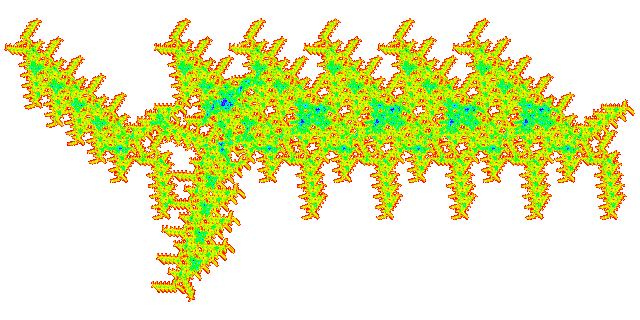
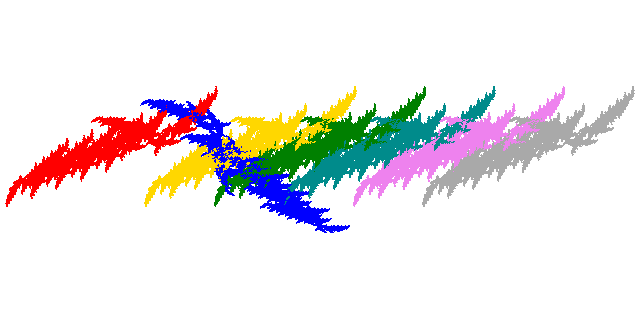
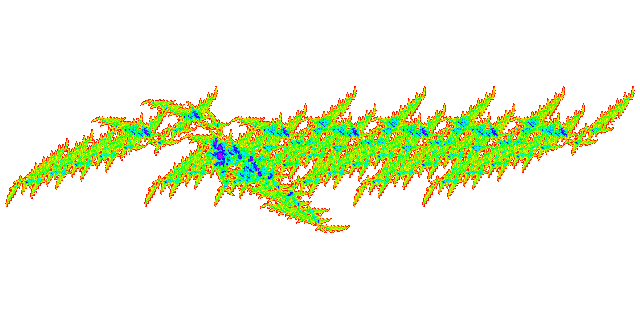
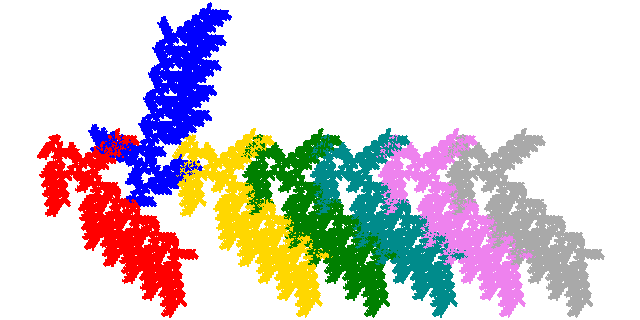
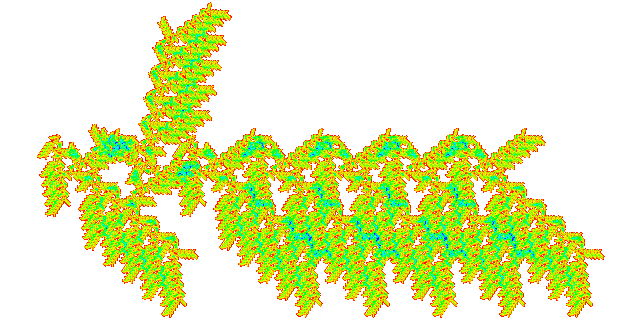
Of the tiles where the second element is rotated by 180° with respect to the others three are disconnected. The first two of the others, unlike most of the tiles here, are visually identifiable as tiles.
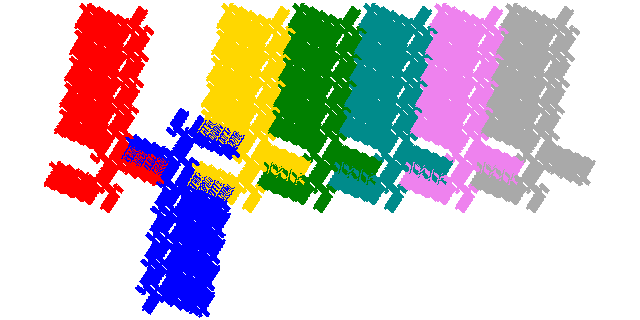
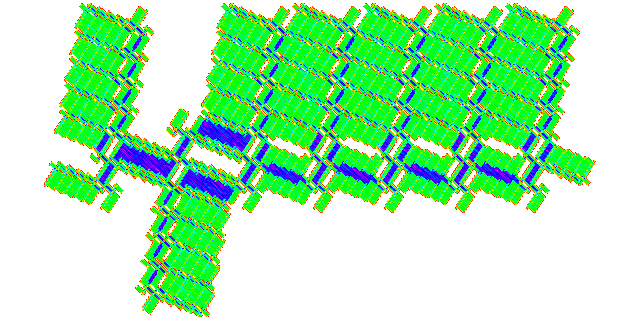
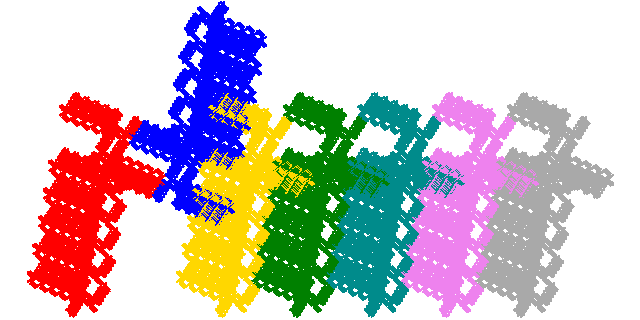
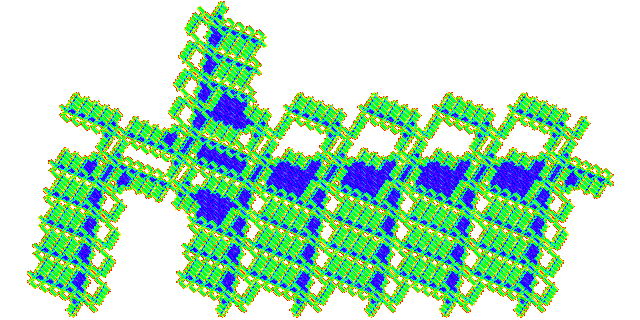
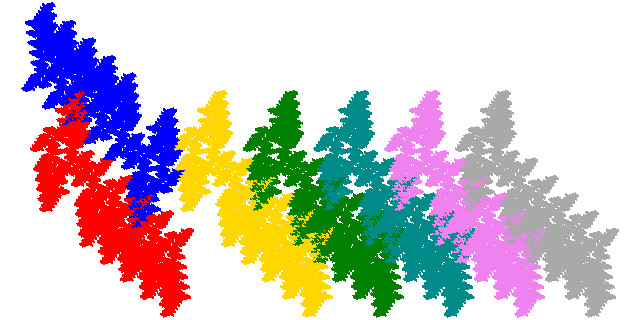
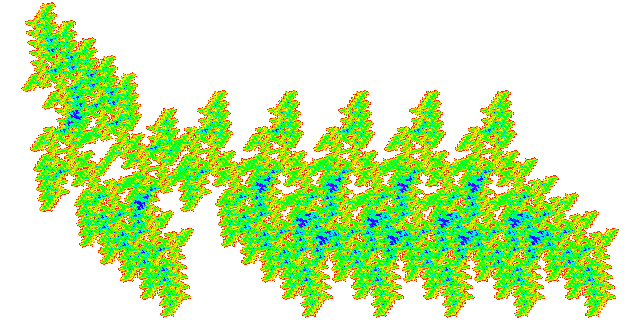
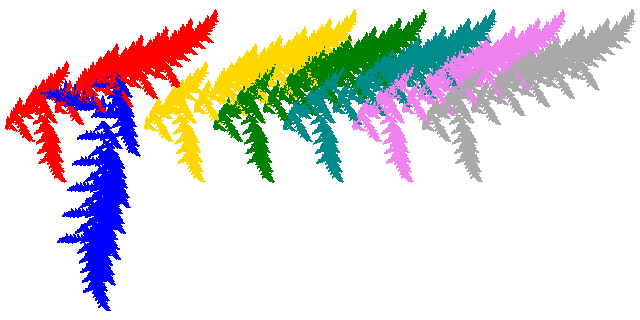
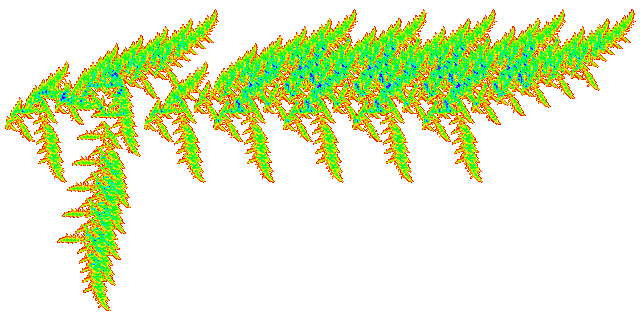
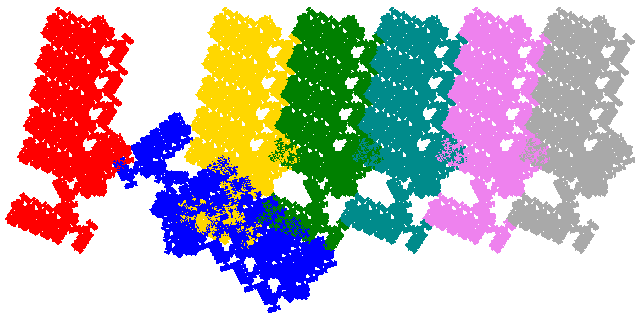
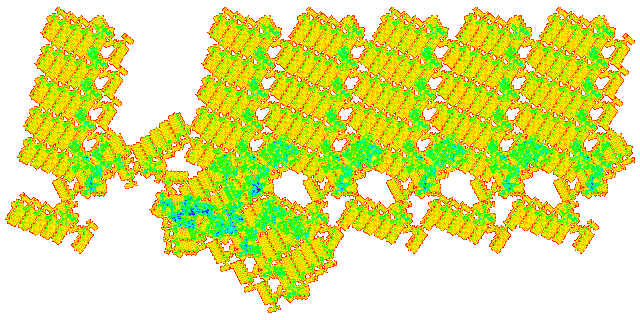
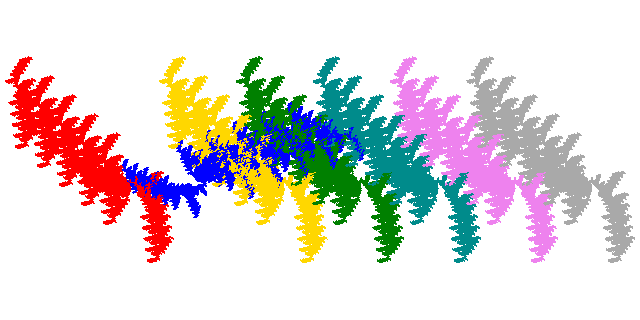
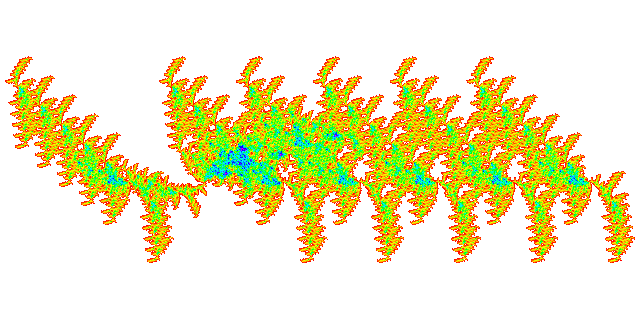
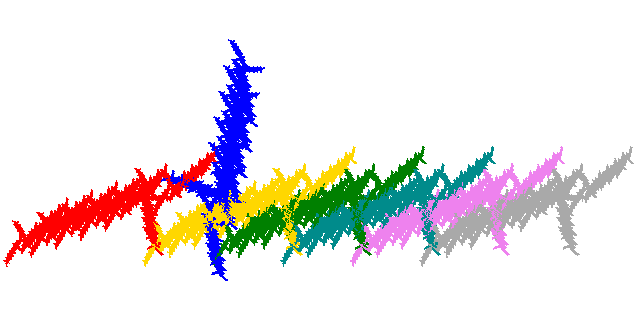
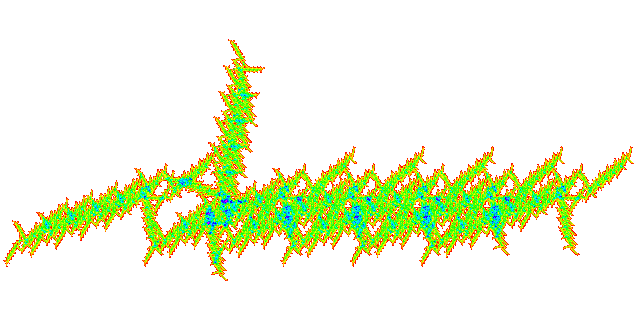
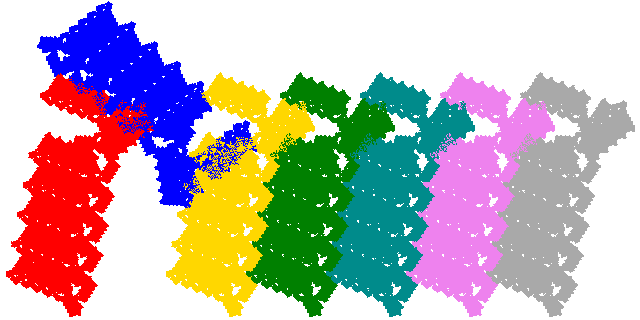
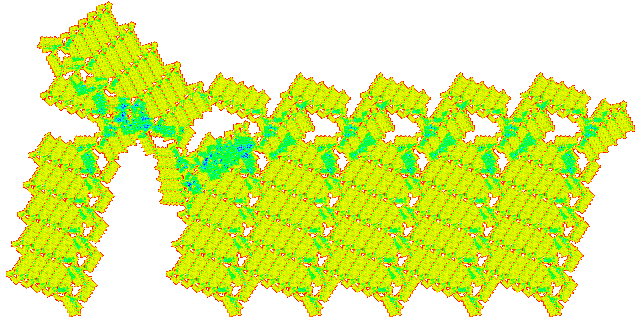
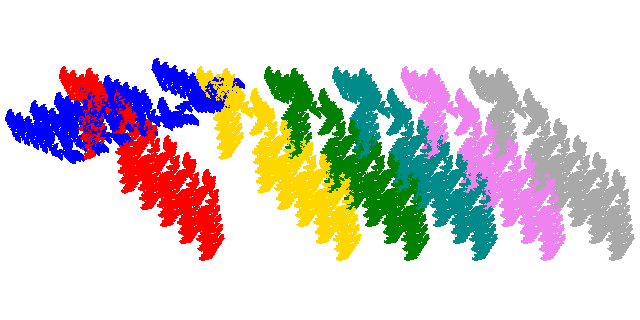
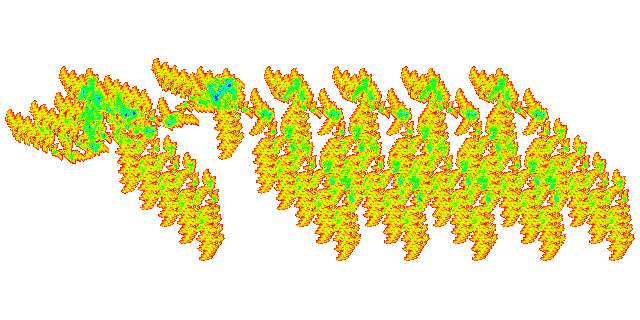

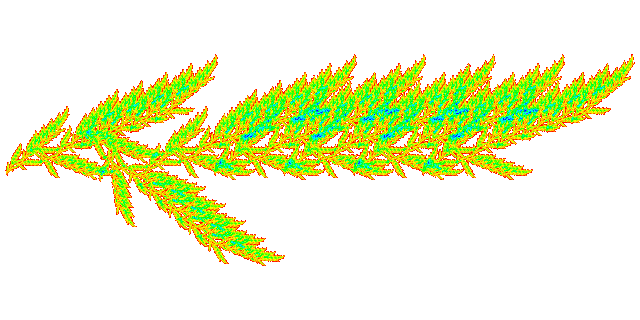
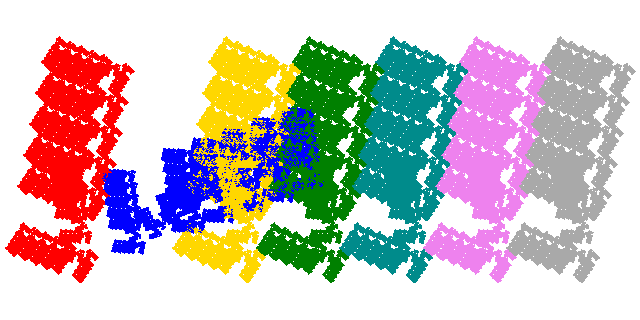
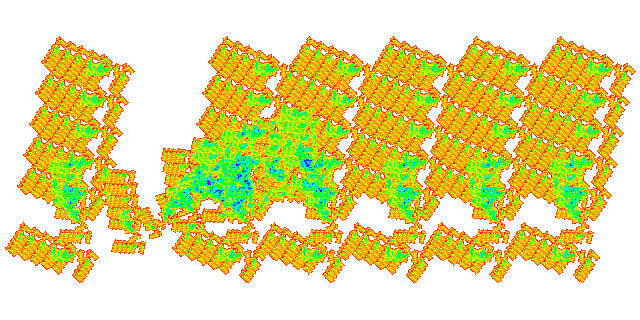
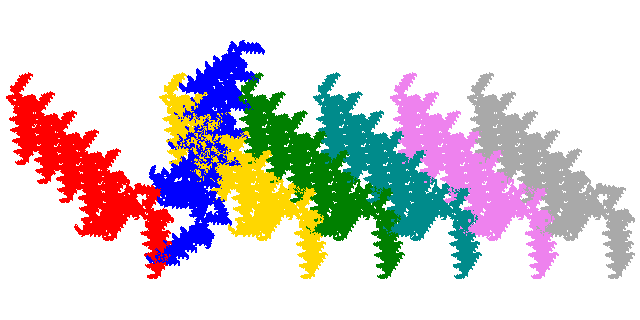
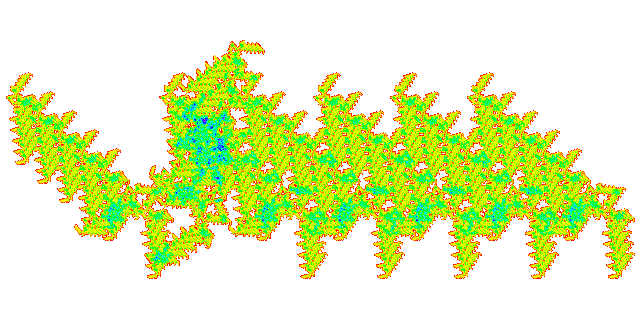
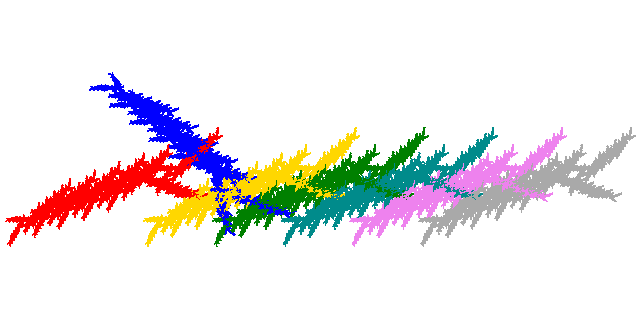
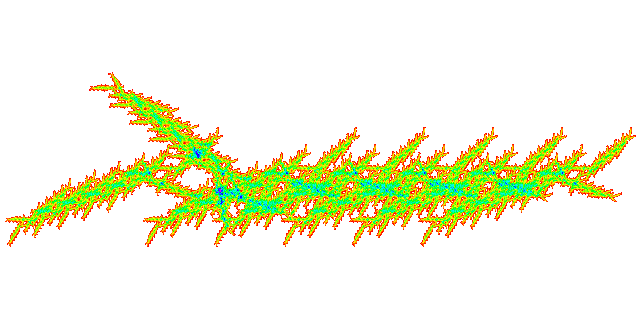
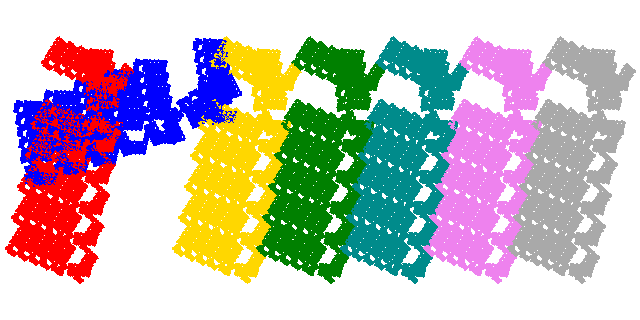
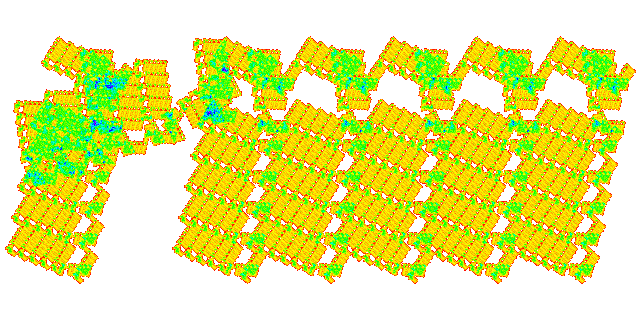
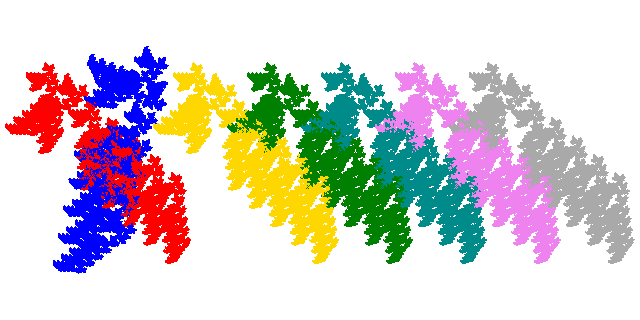
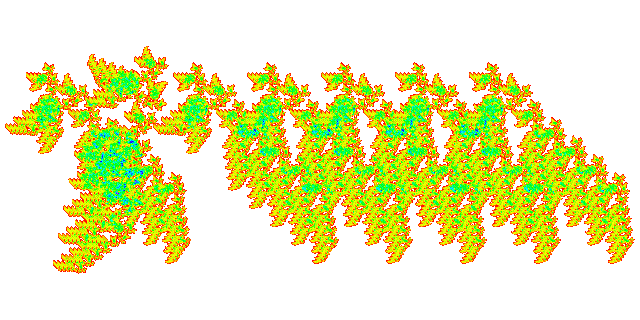
As the equivalent of the caterpillar tiles haven't been separated off here, there are 30 non-isorotational candidates. All are connected.
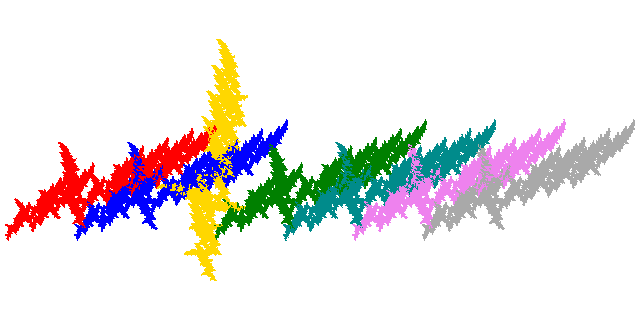
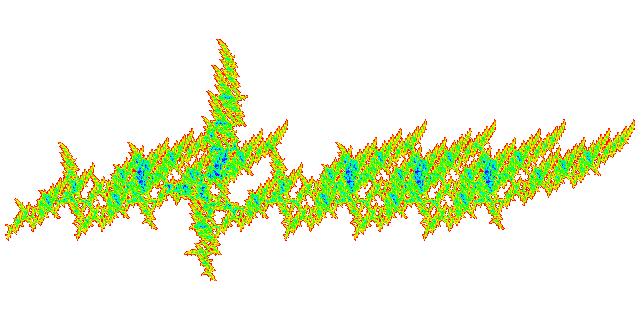
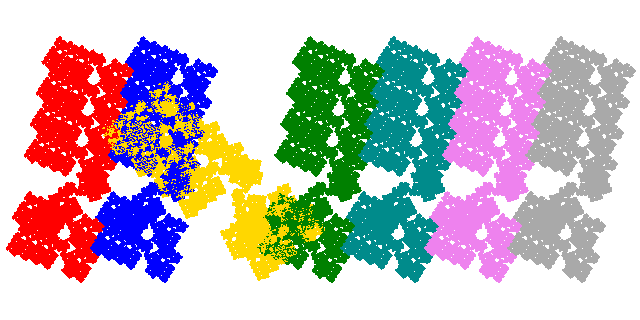
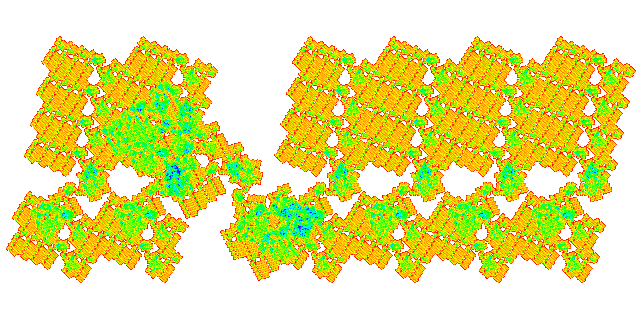
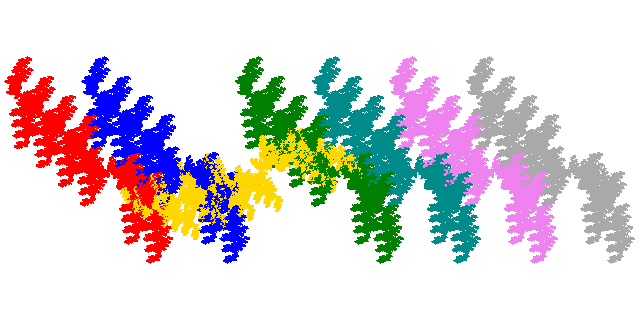
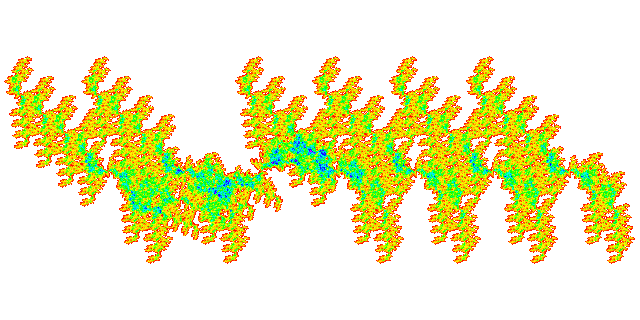
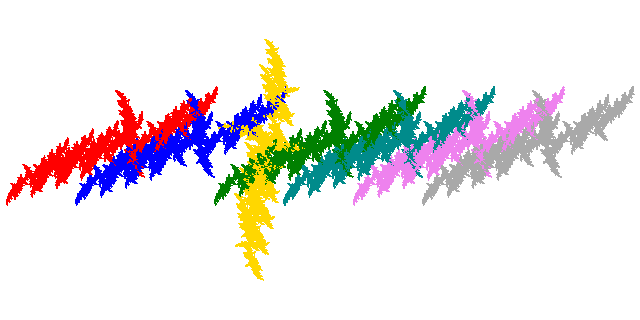
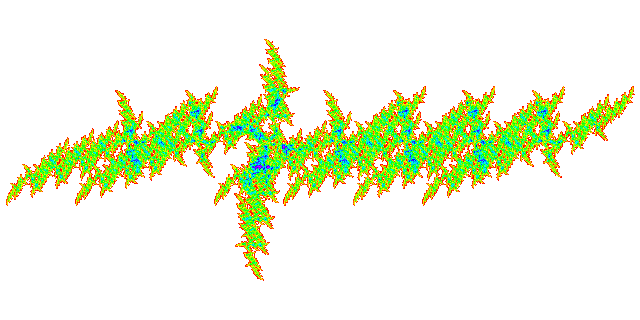
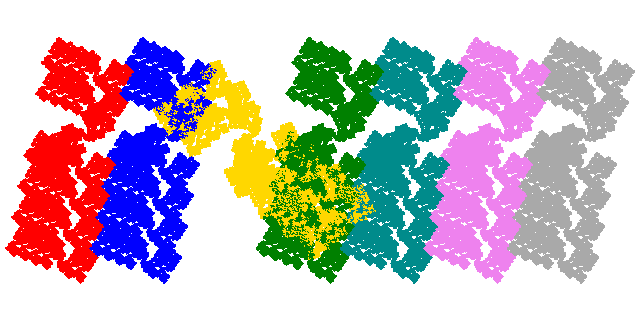
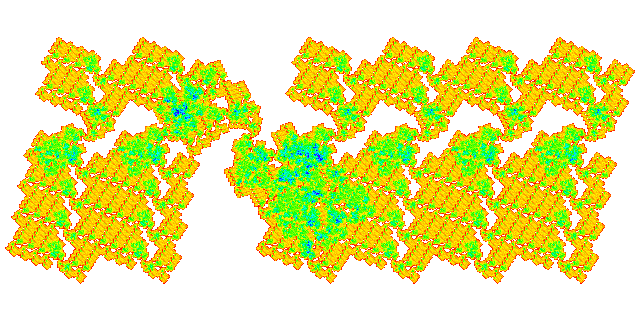
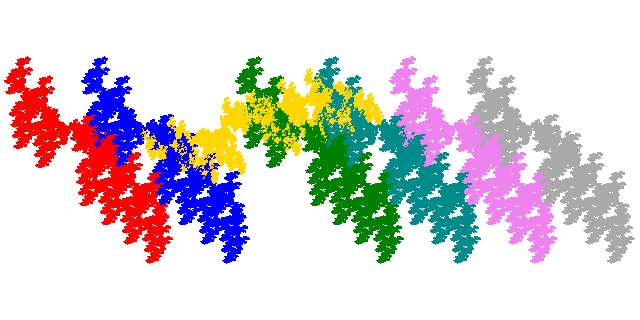
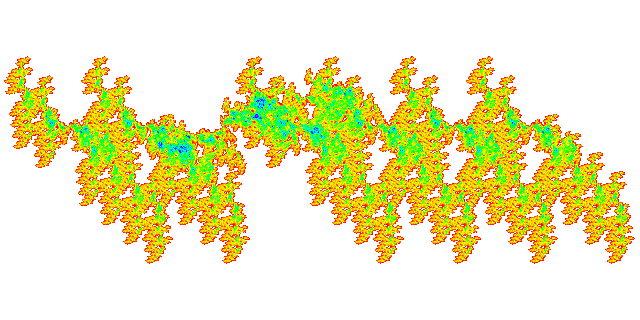
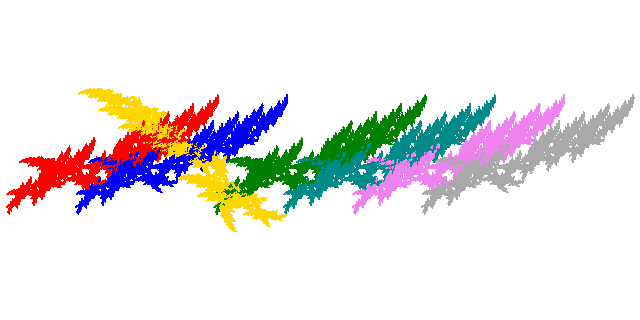
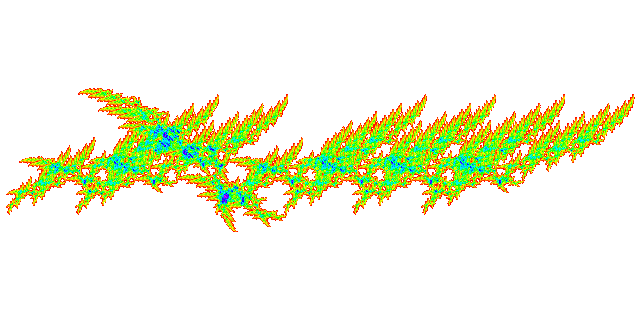
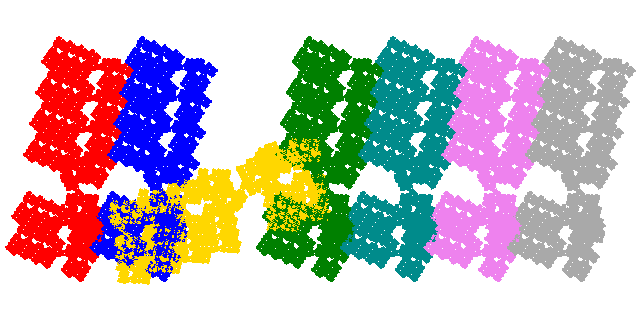
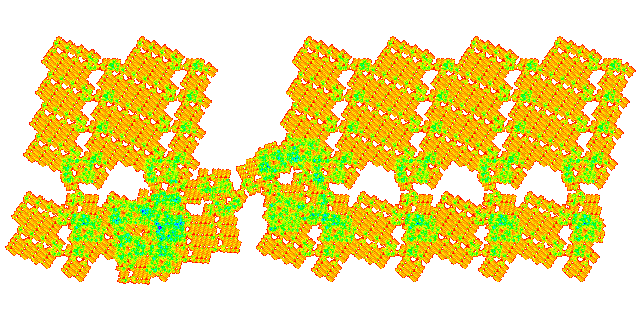
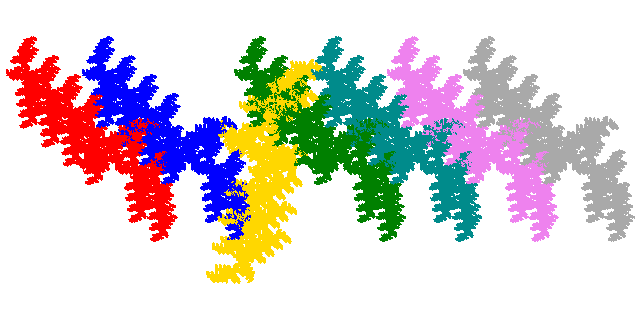
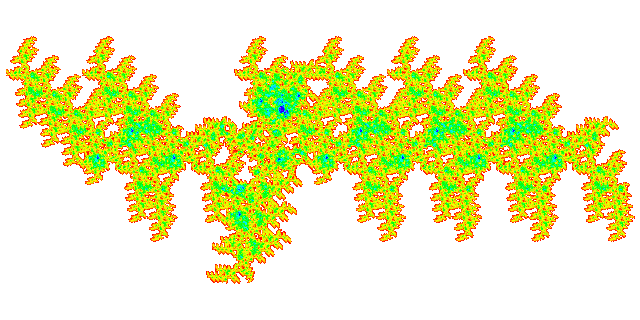
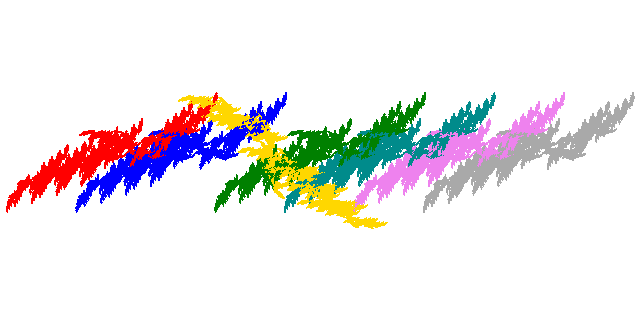
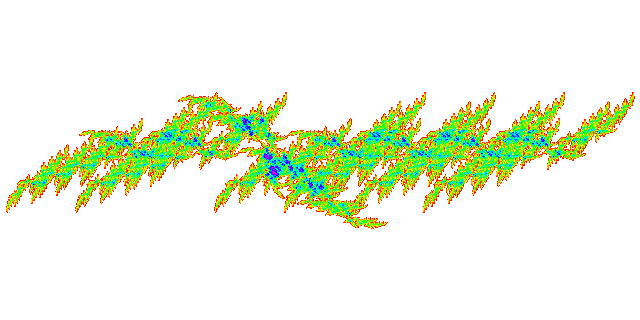
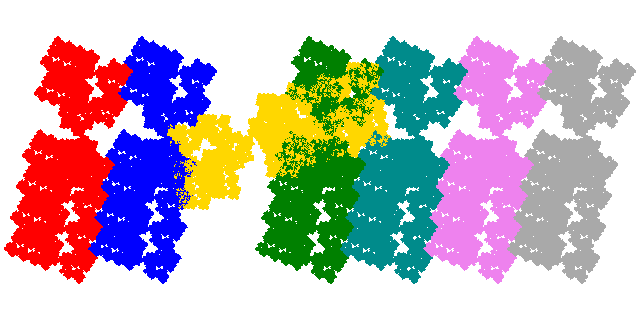
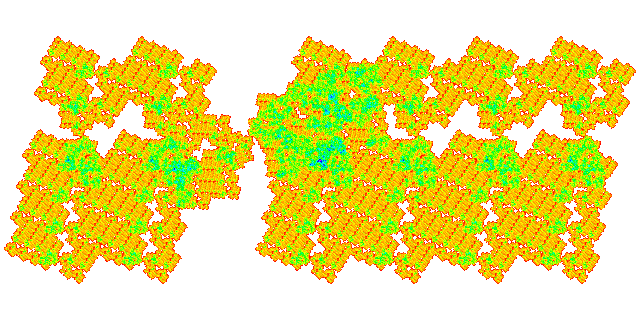
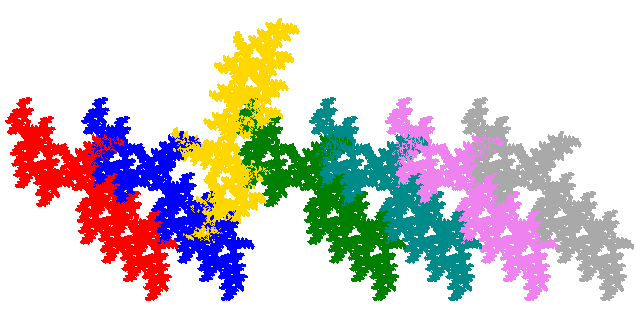
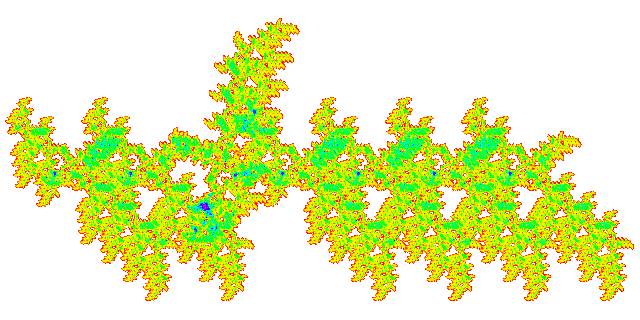
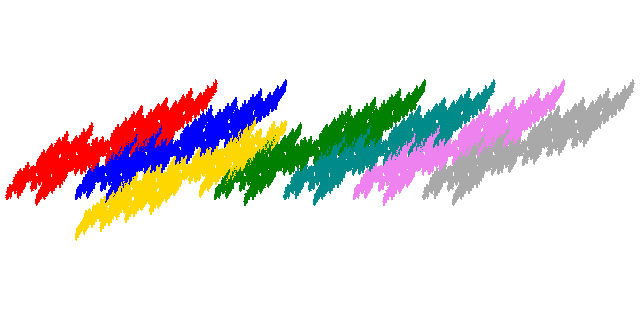
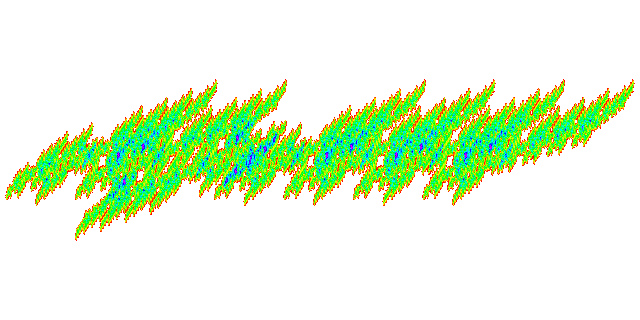
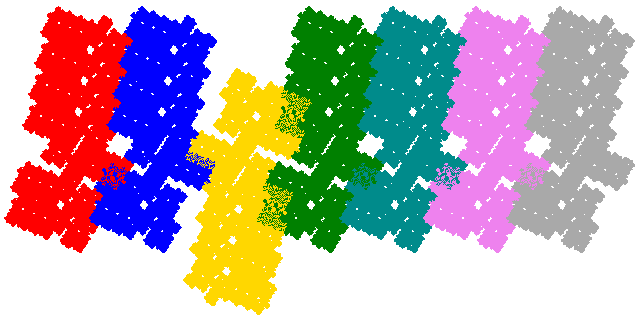
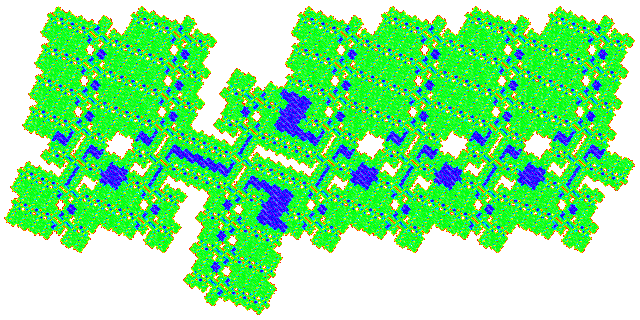
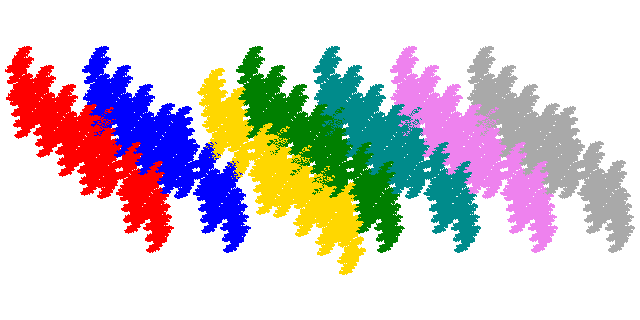
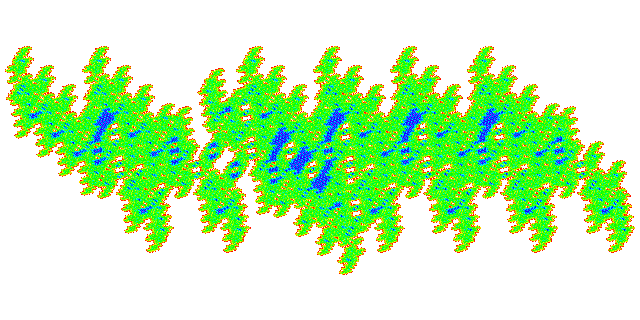

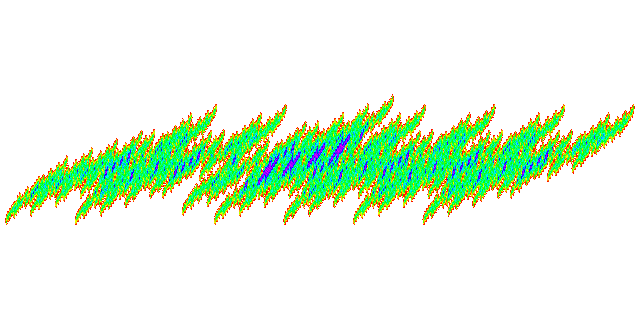
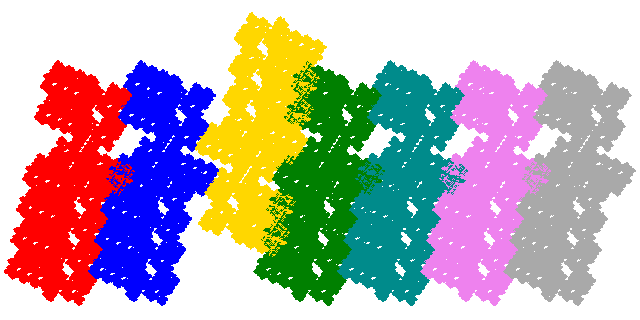
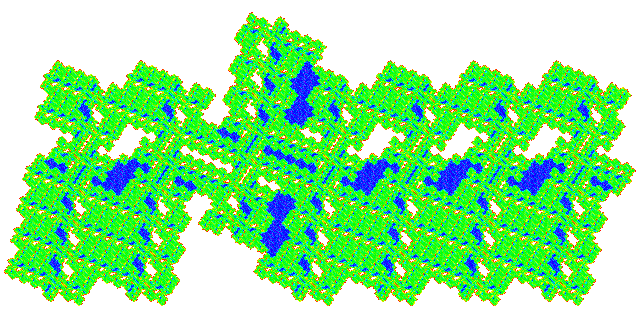
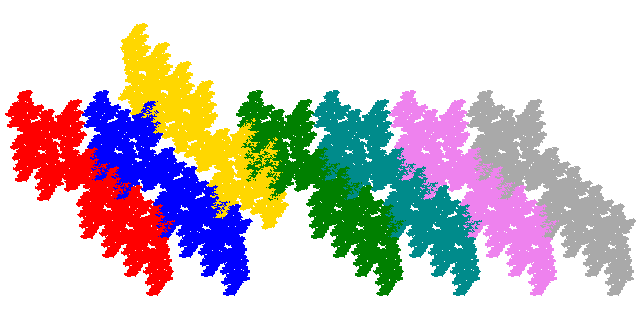
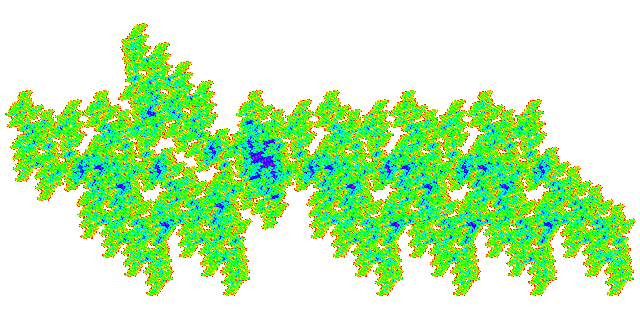
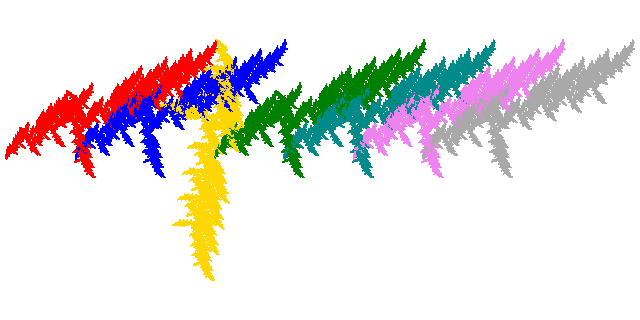
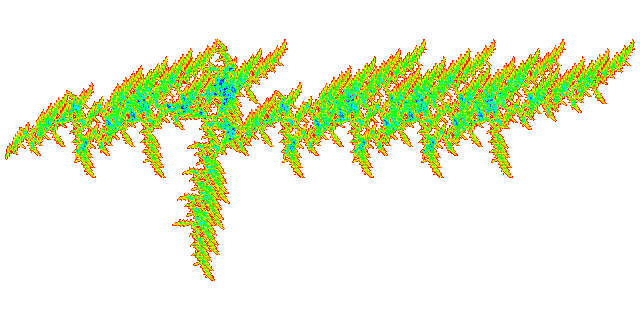
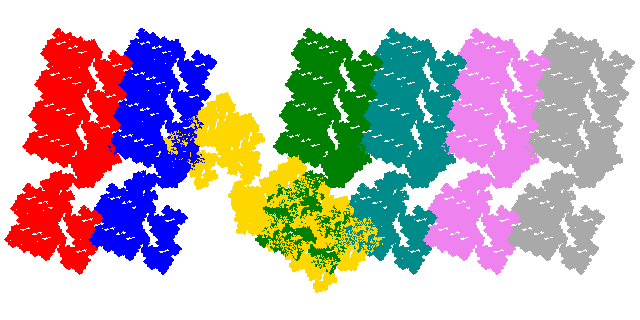
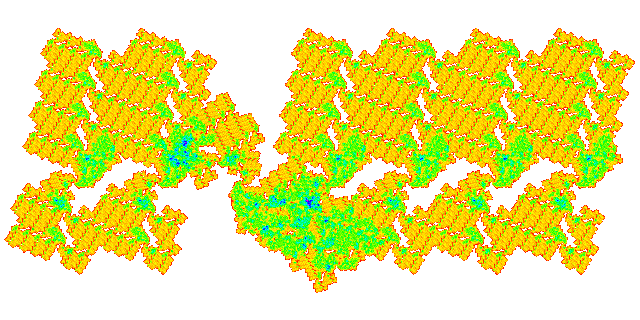
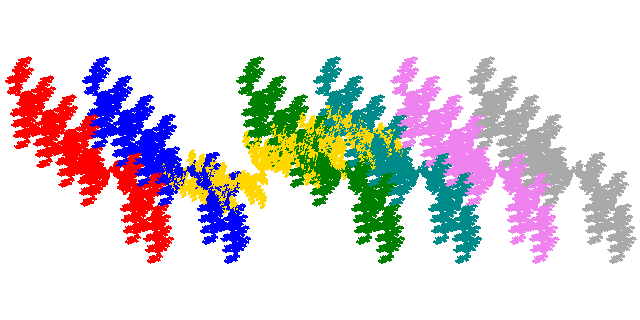
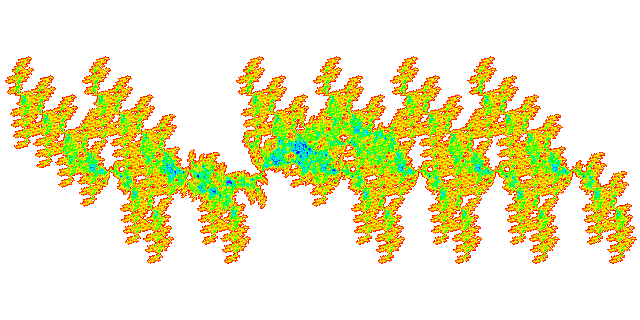
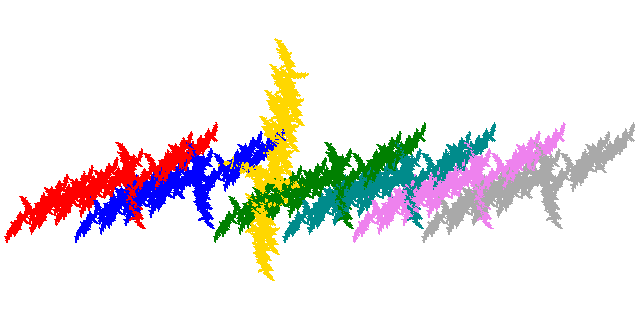
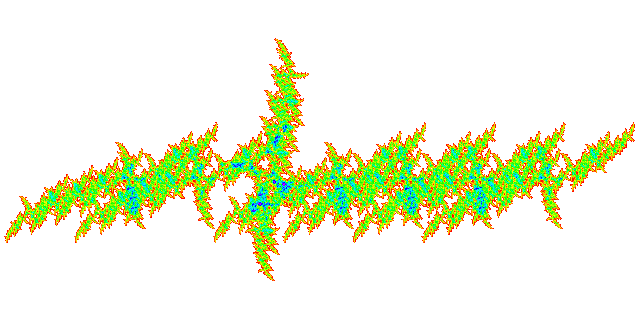
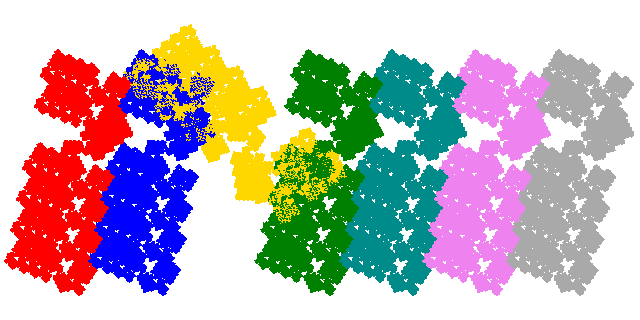
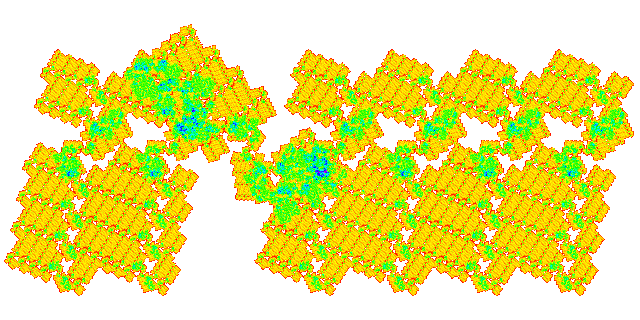
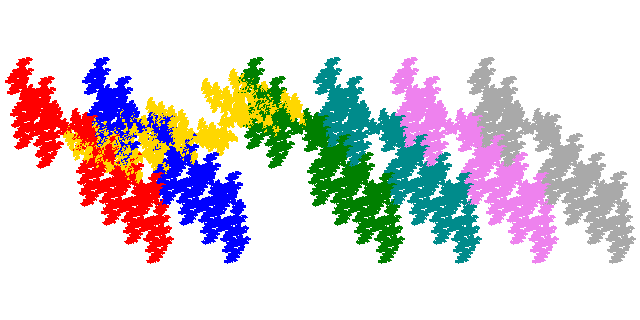
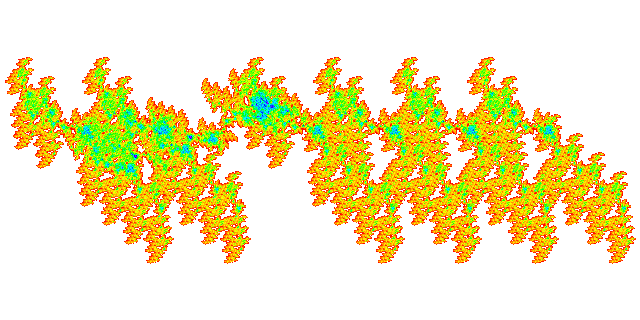
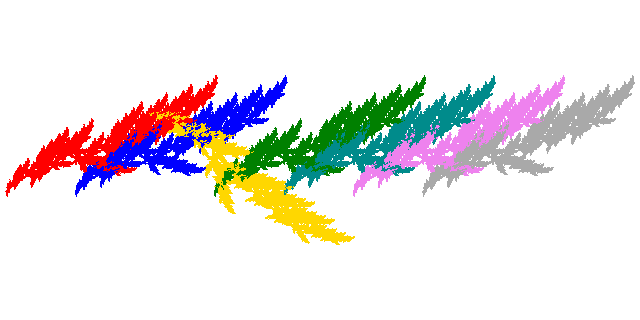
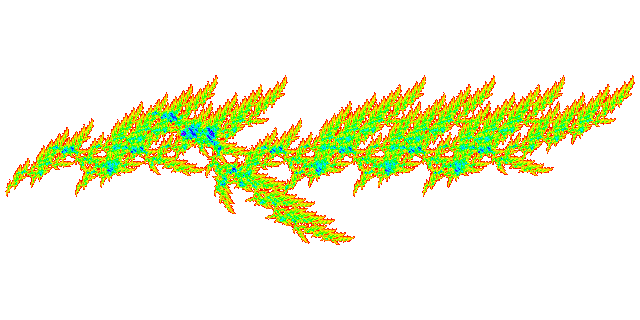
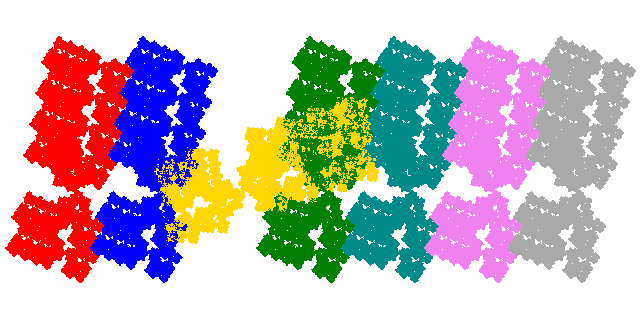
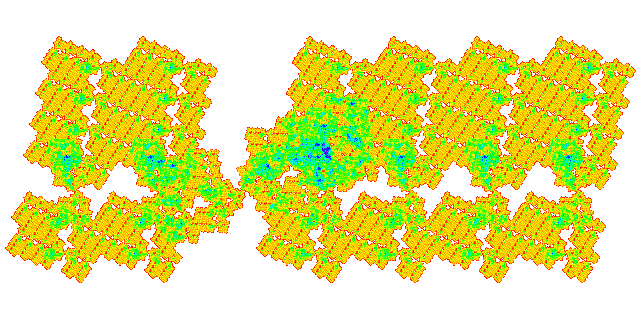
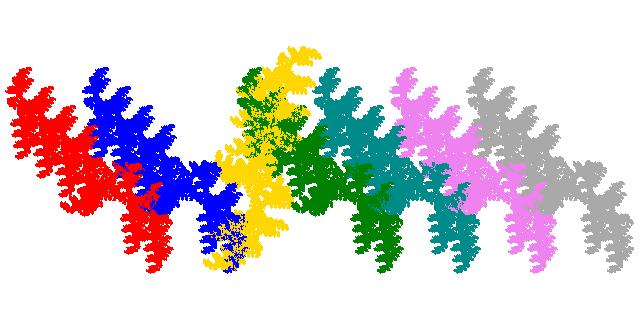
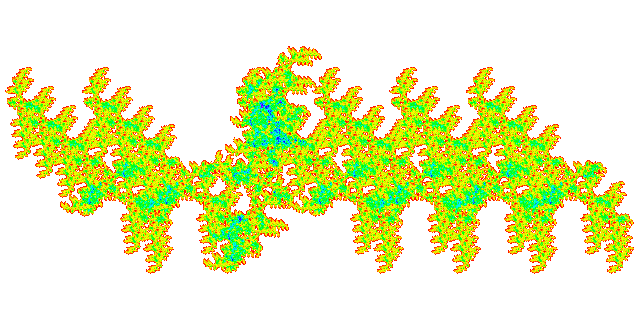
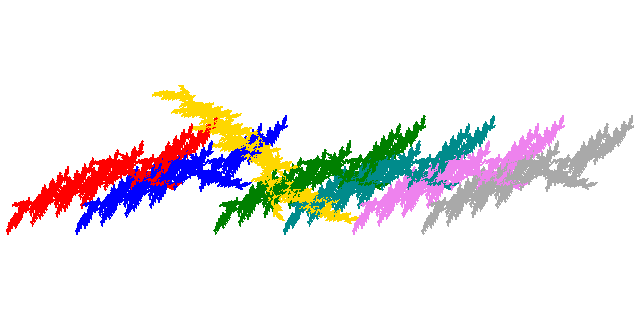
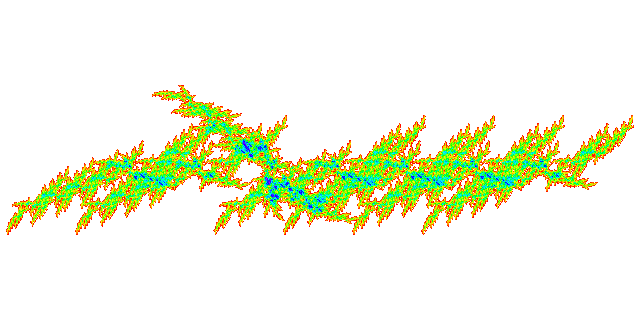
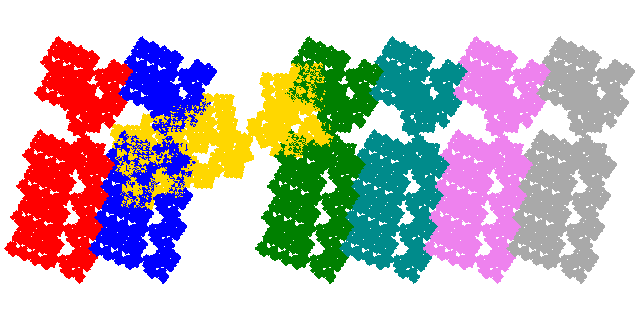
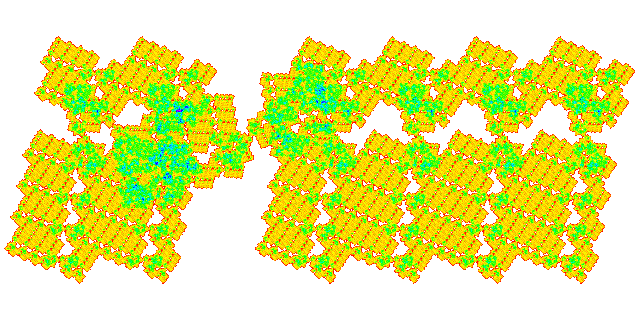
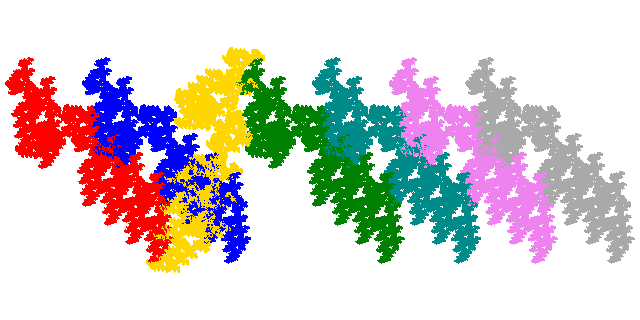
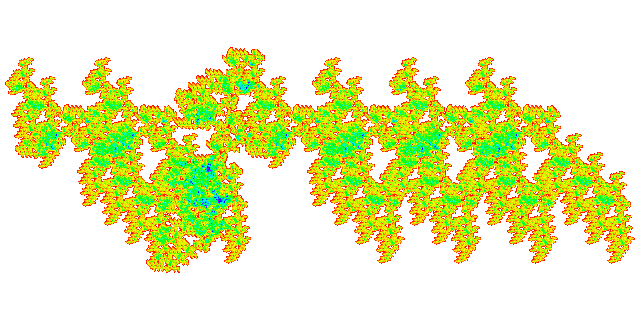
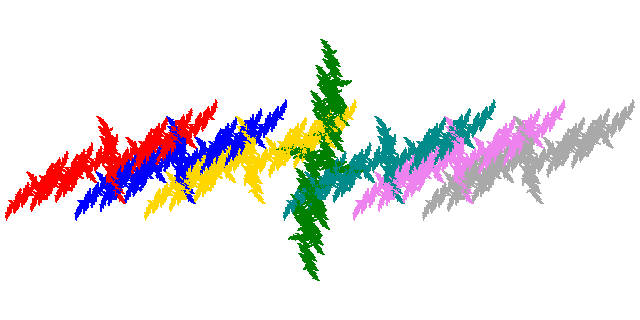
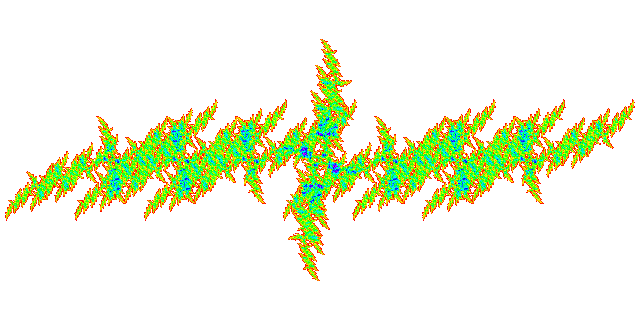
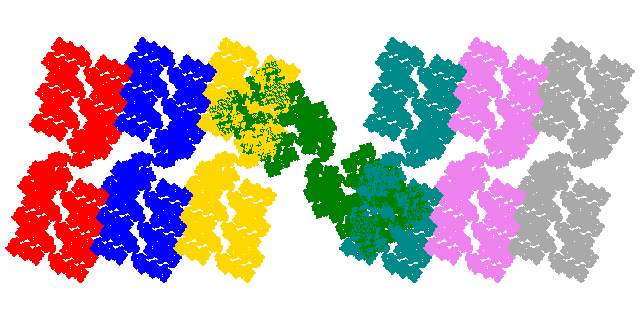
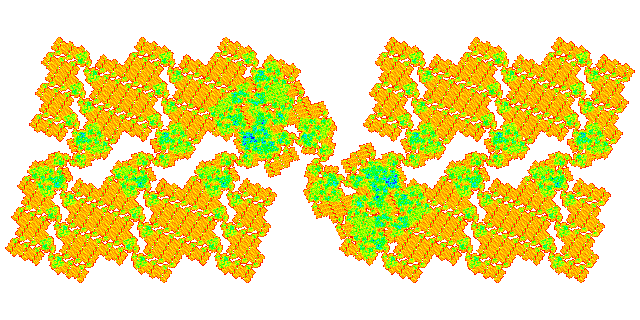
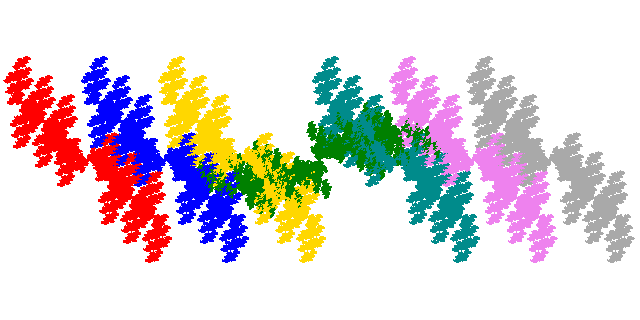
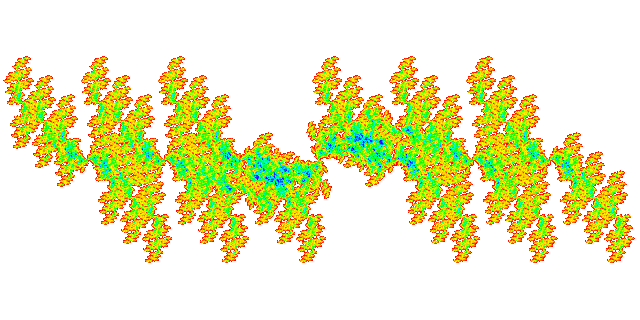
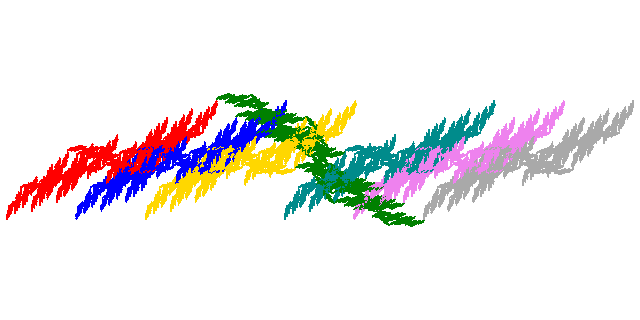
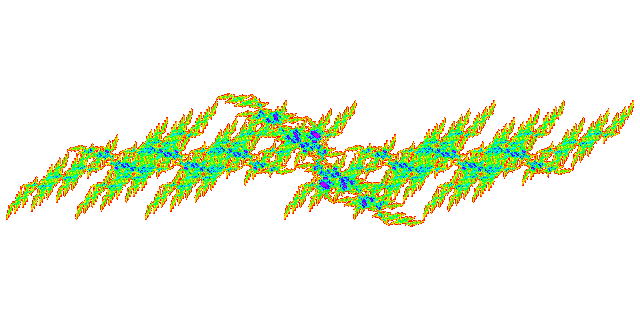
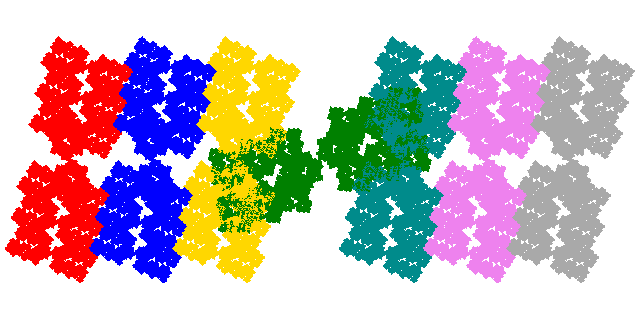
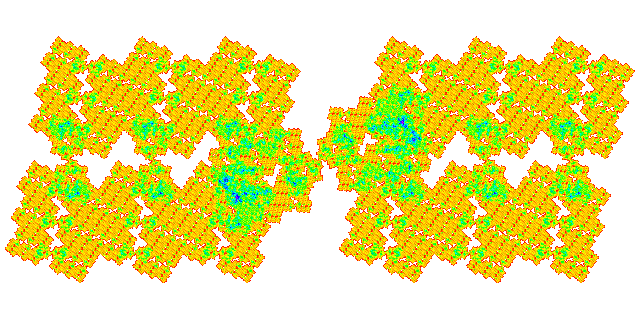
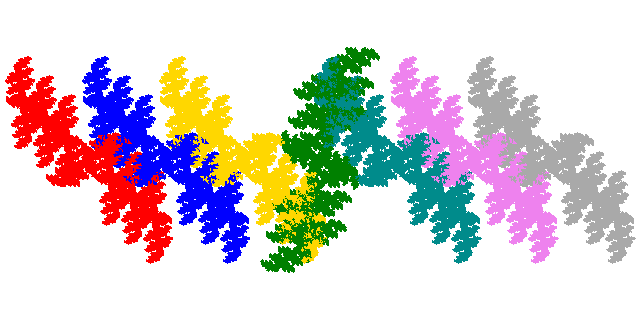
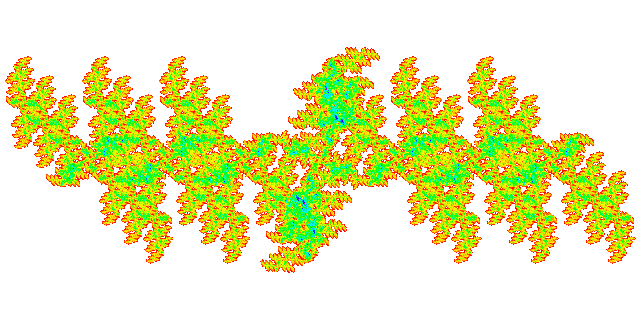
9 of the linear heptahextals are c2-symmetric, and therefore the grouped element technique can be used to generate new tiles. As there are 7 elements application of the grouped element technique generates 128 candidate IFSs for each of the original tiles. Of these 16 are degenerate versions of the original tile, and the remaining 112 come in 56 rotational image pairs. But the nature of the original tiles, in which each element contacts at most two other elements, results in most of the attractors not being connected, reducing (for the monoorientational tiles) the 56 candidates to 12 tiles.
Source:
References:
© 2019 Stewart R. Hinsley